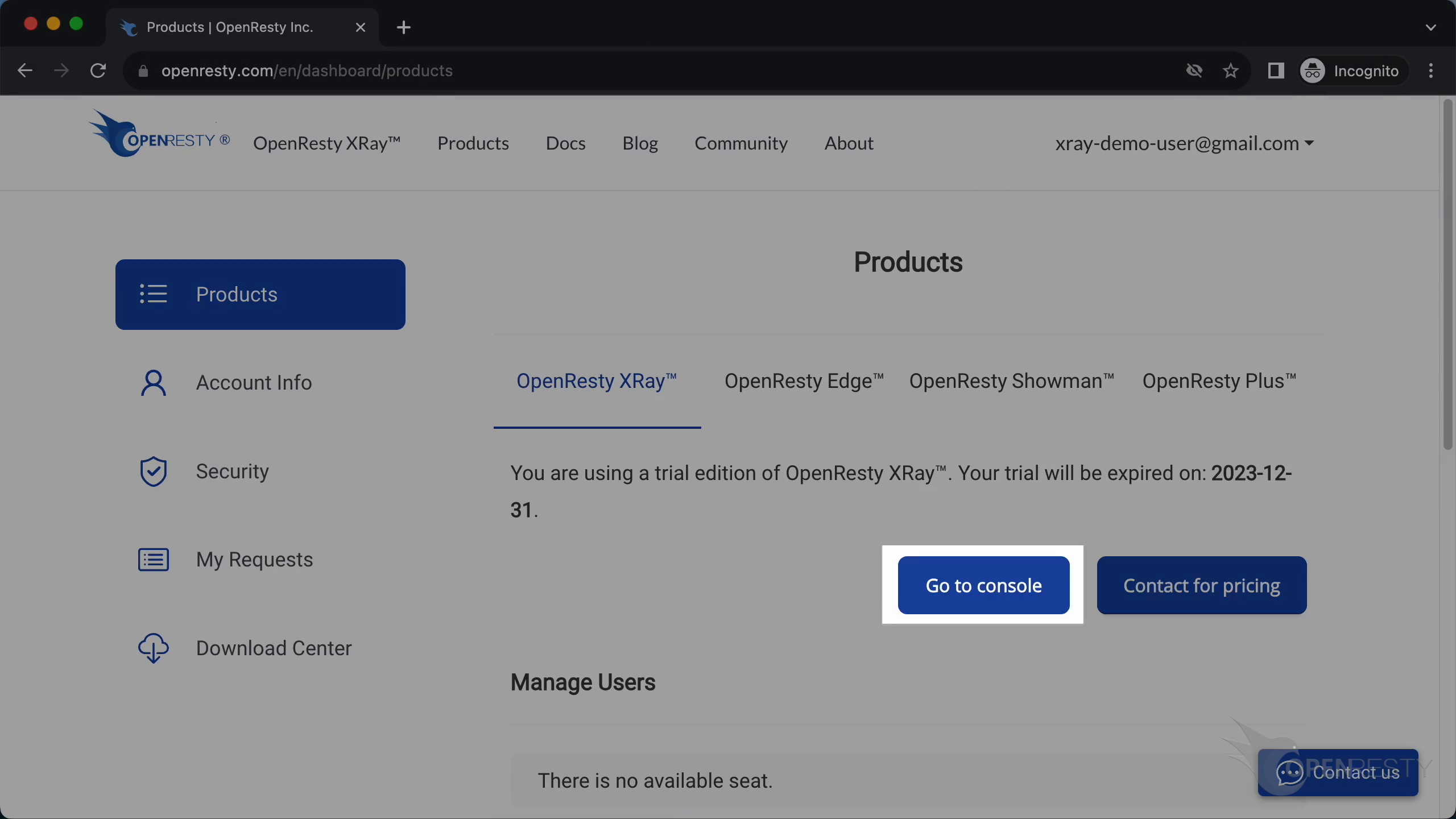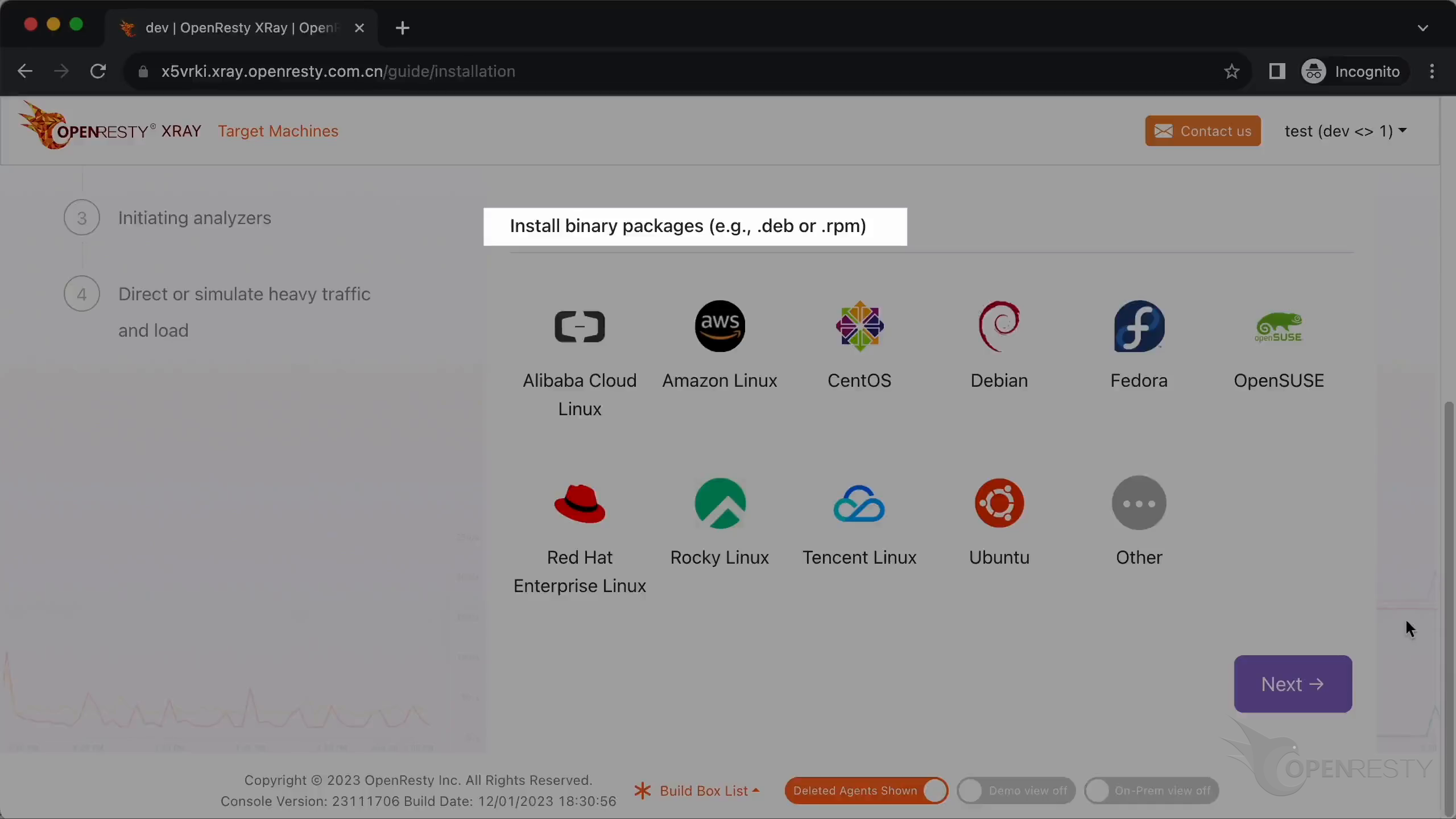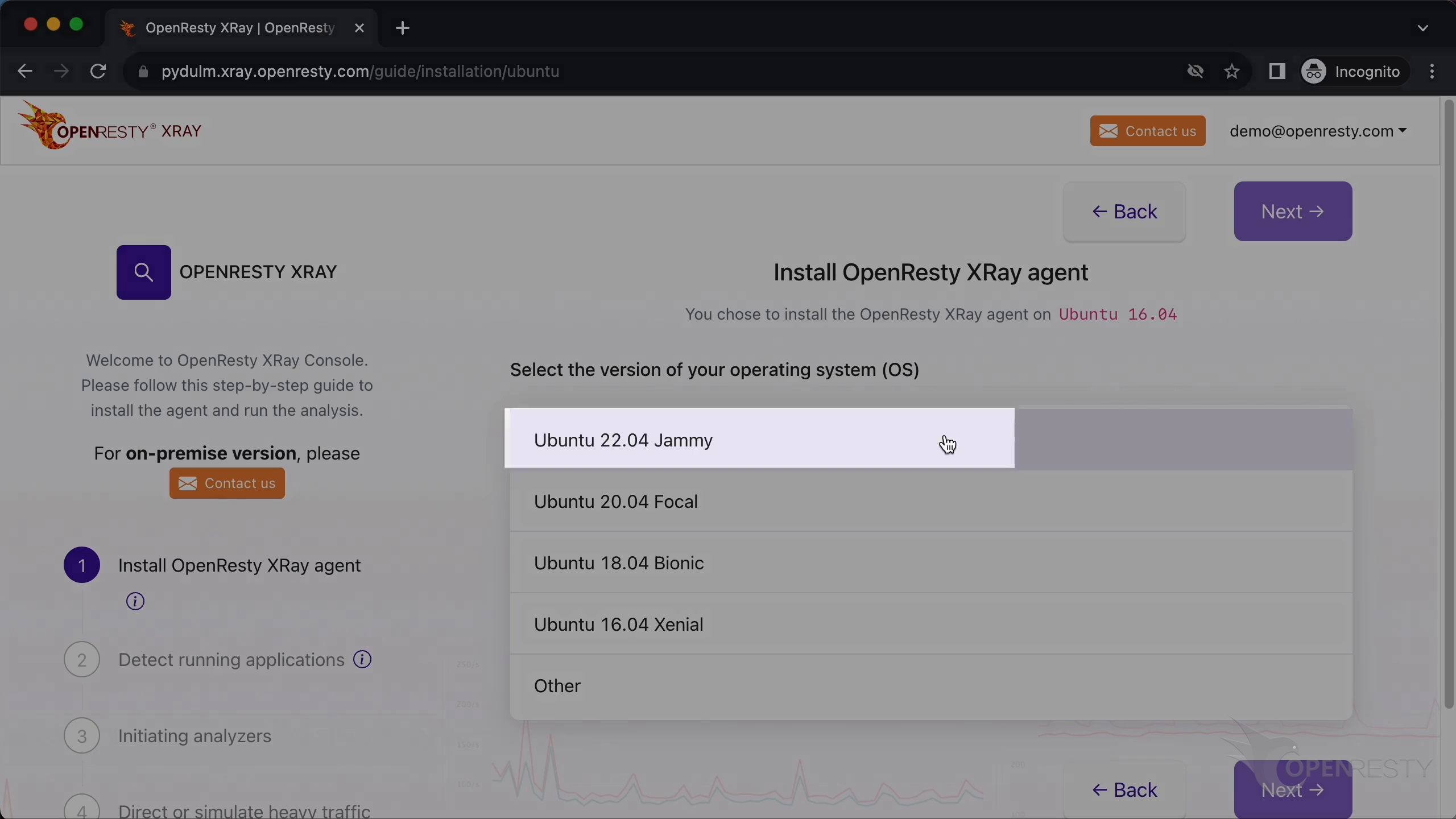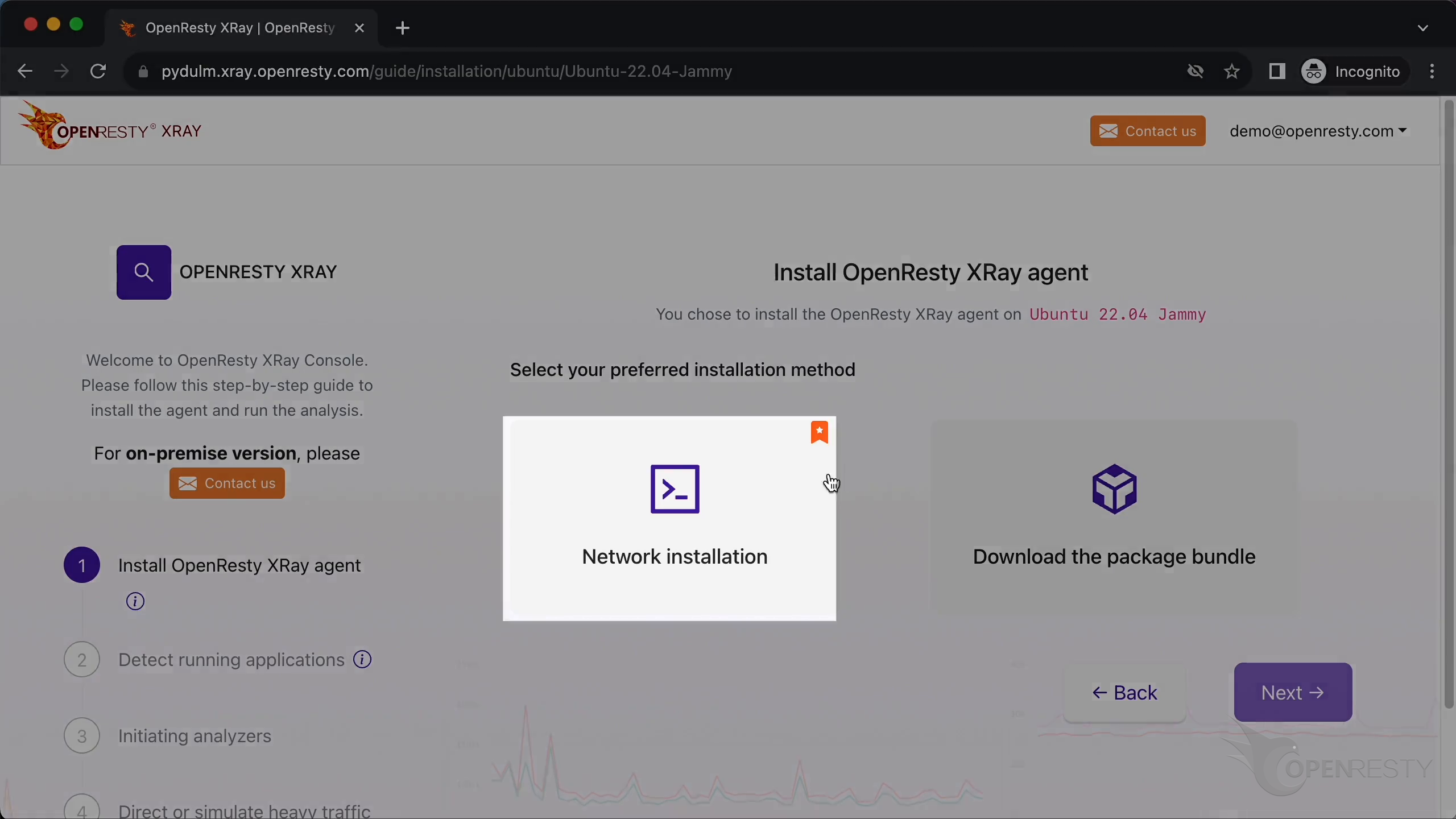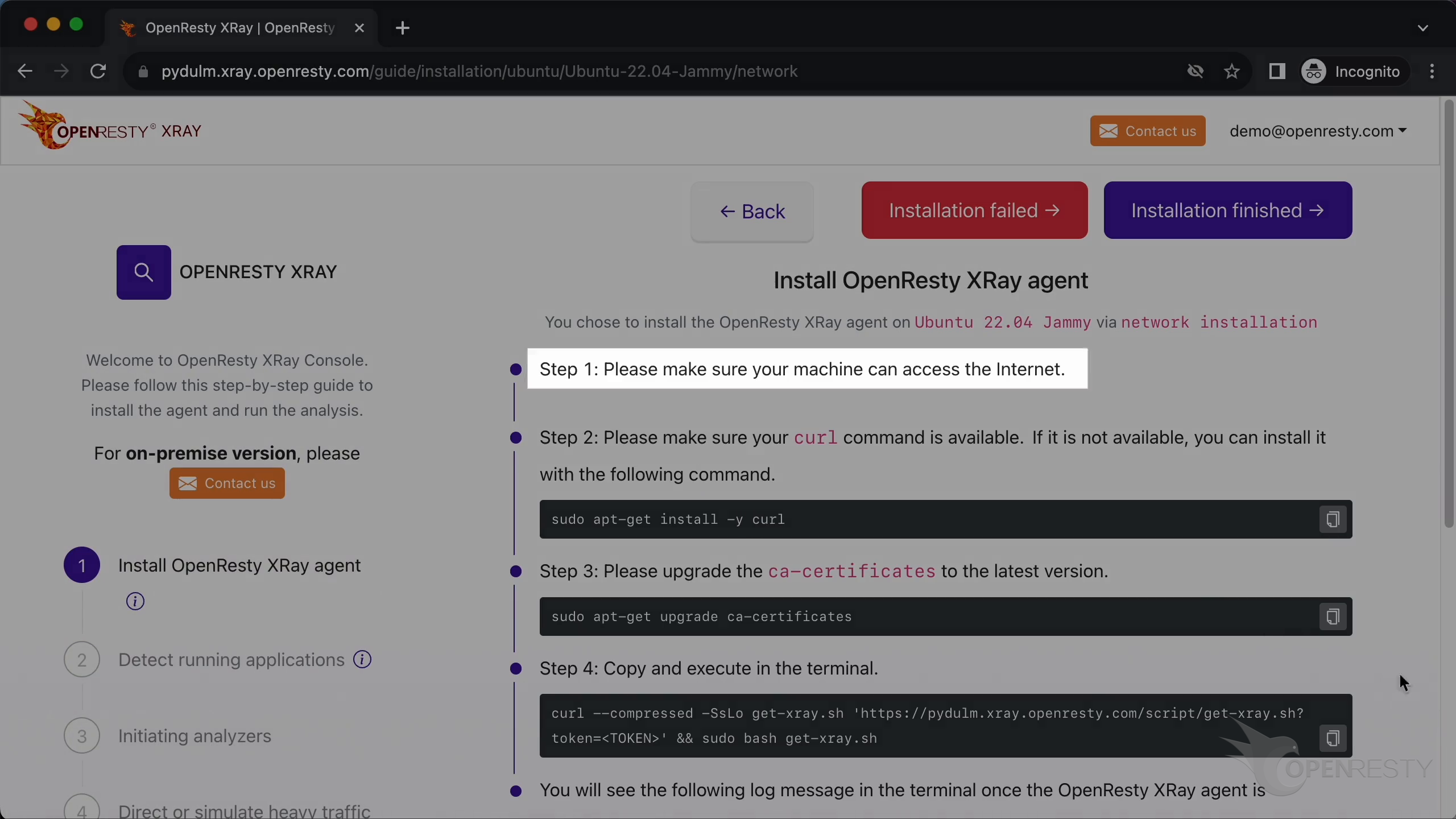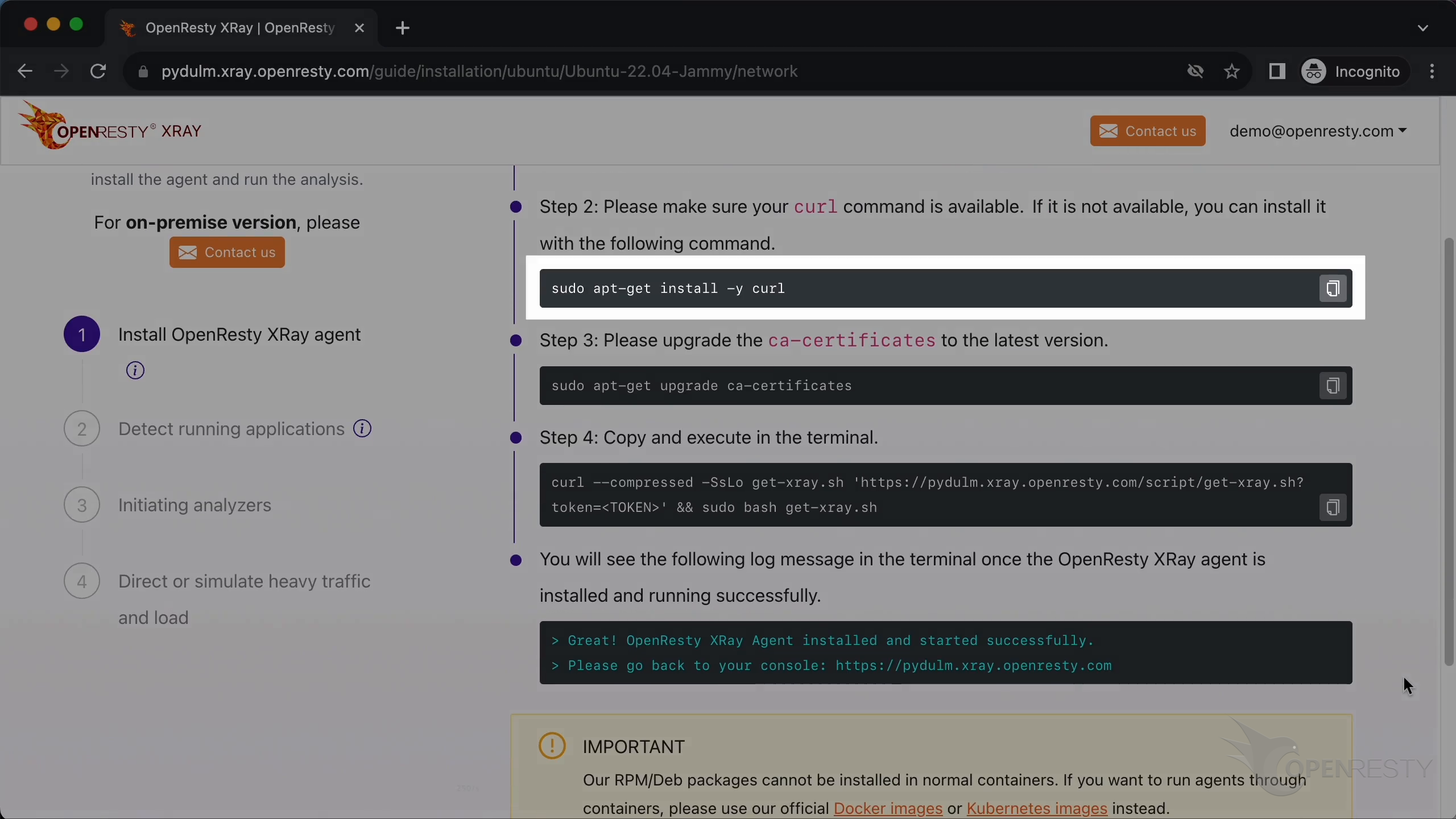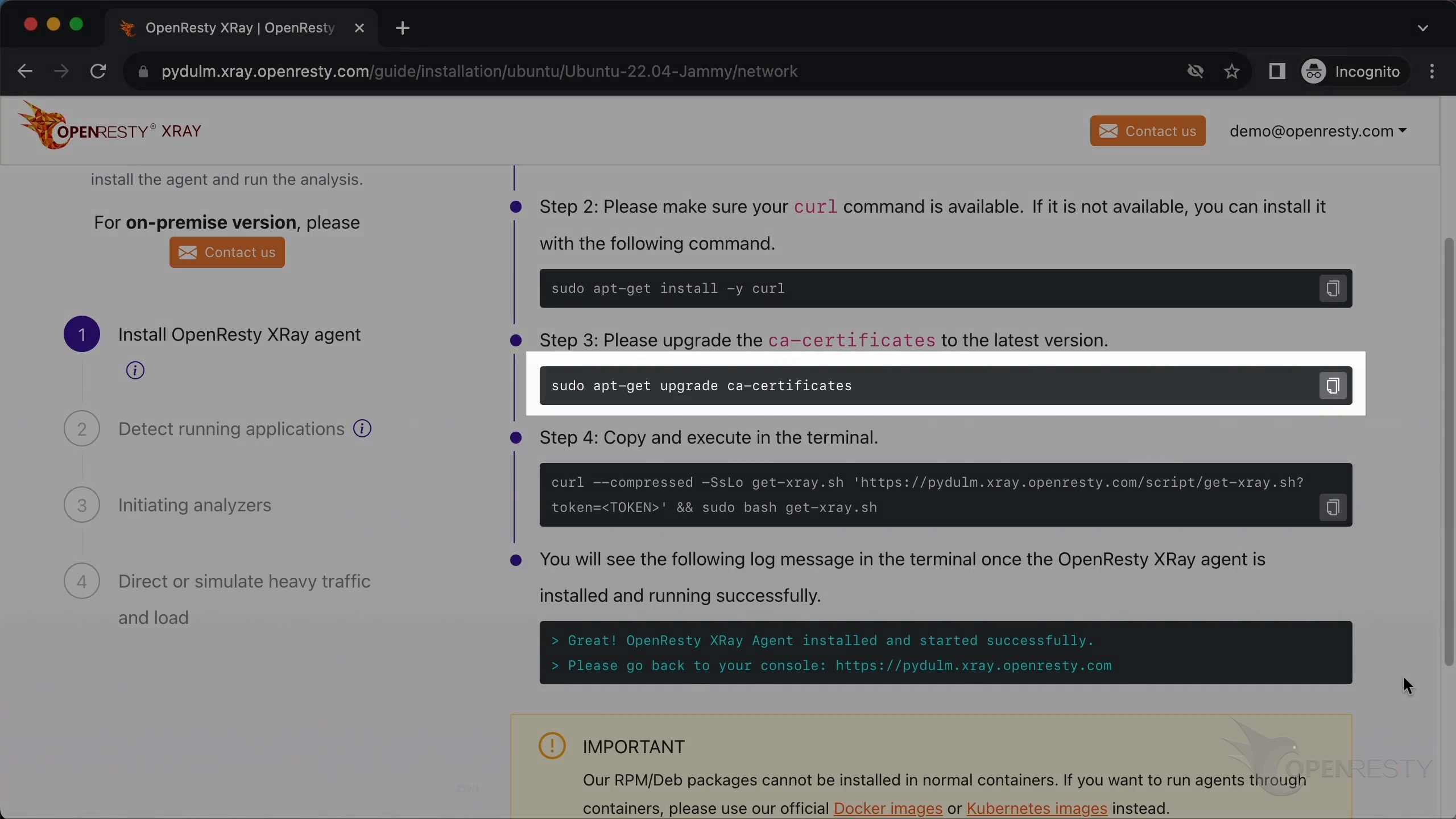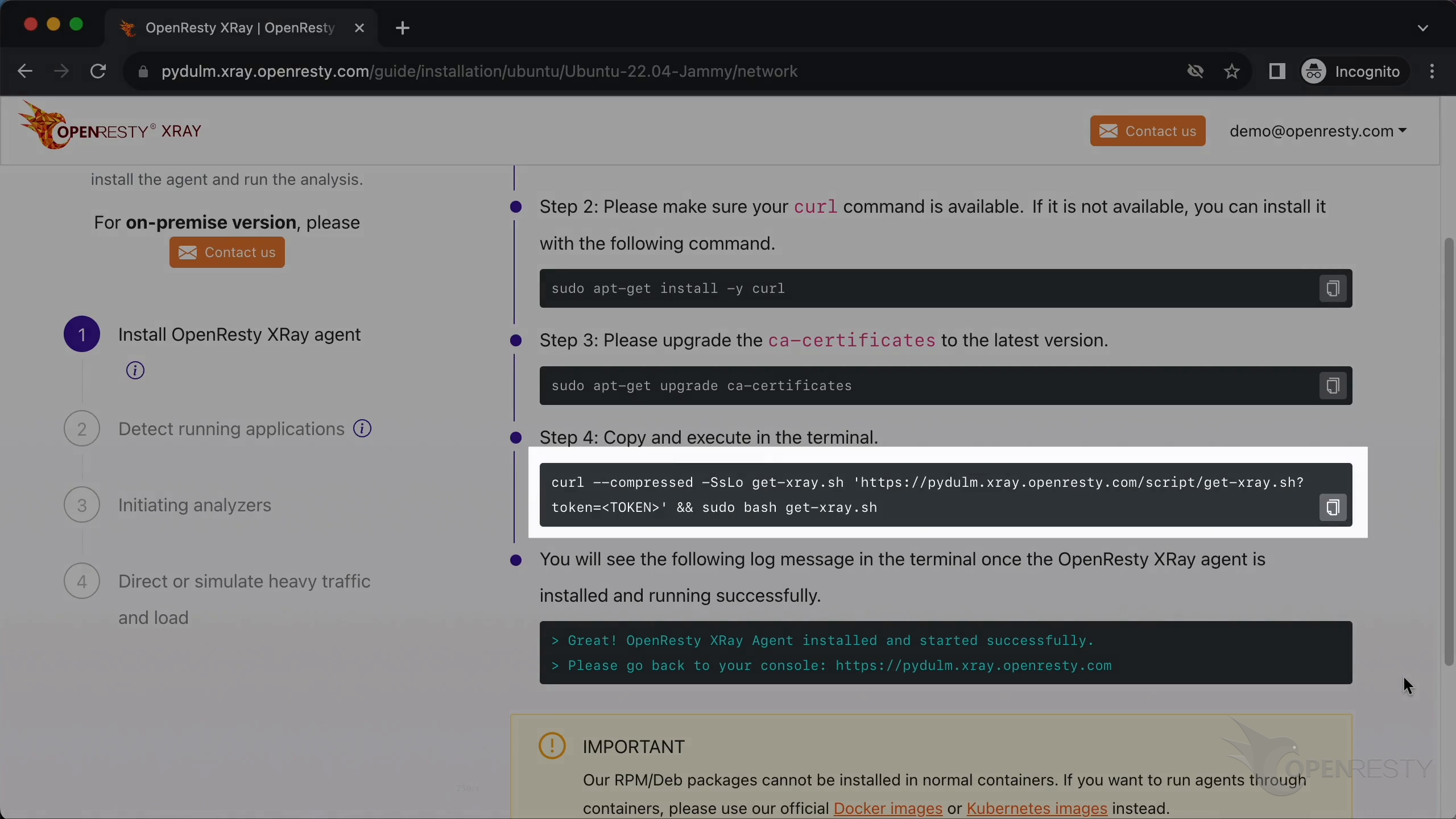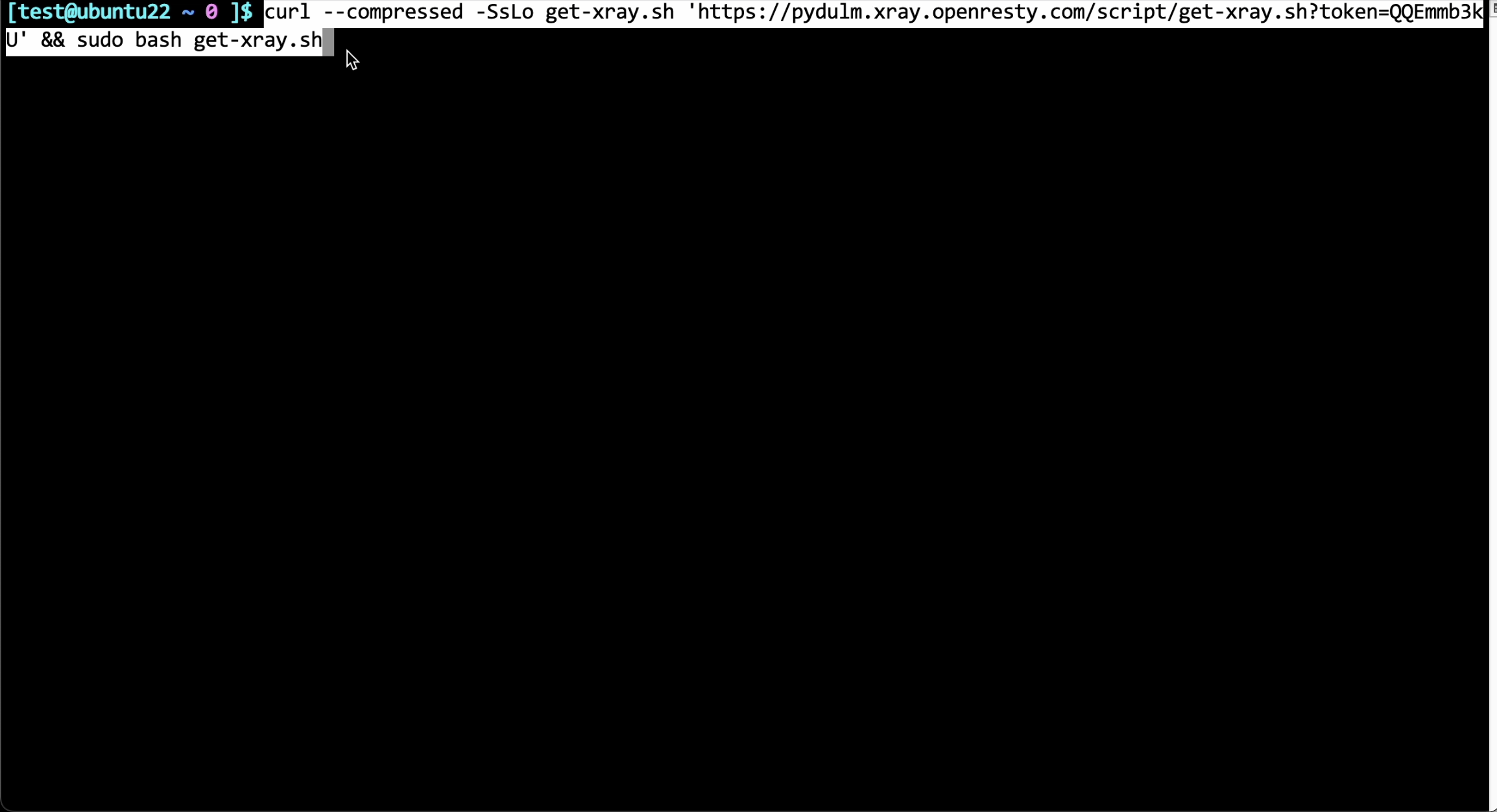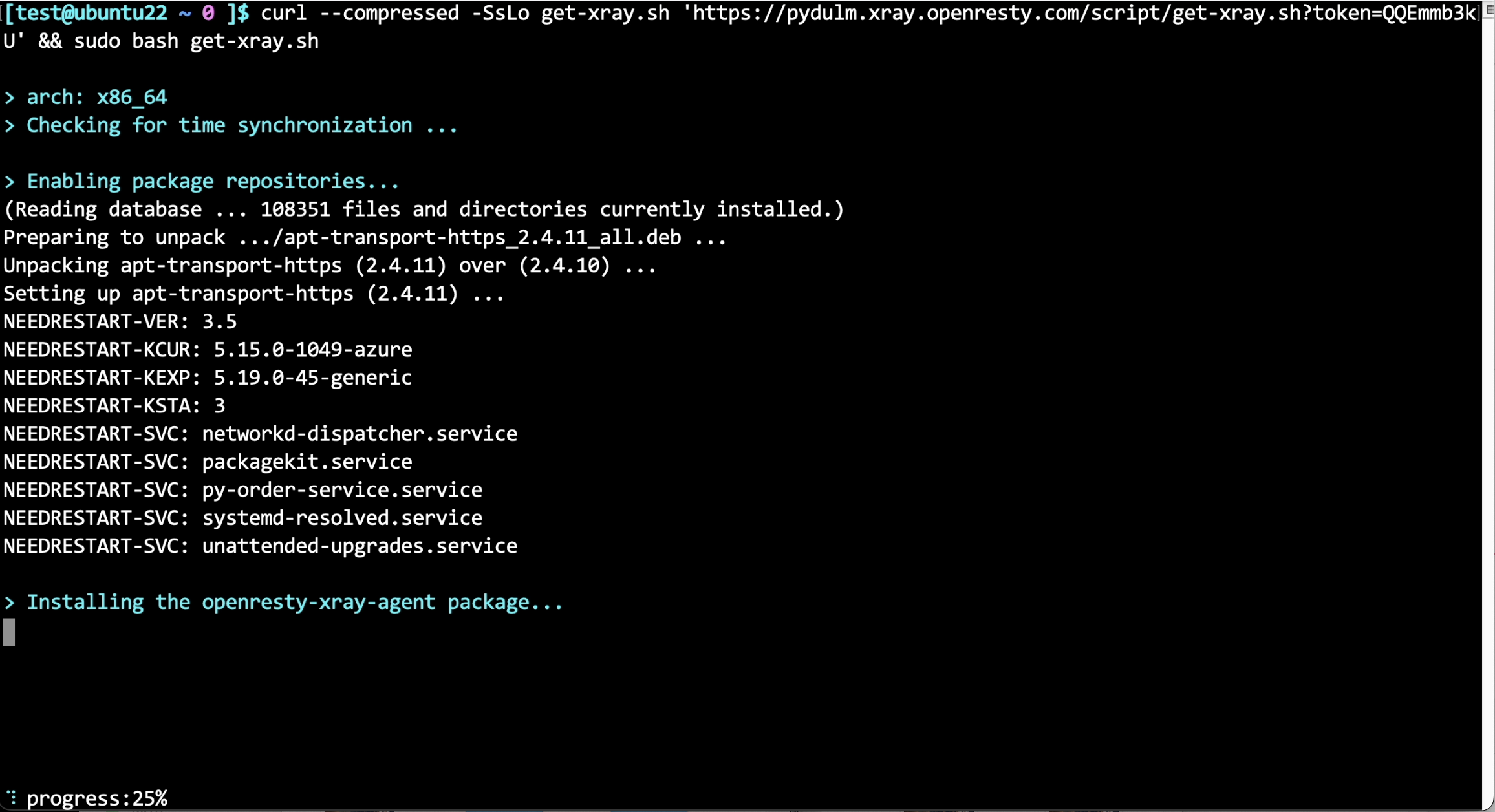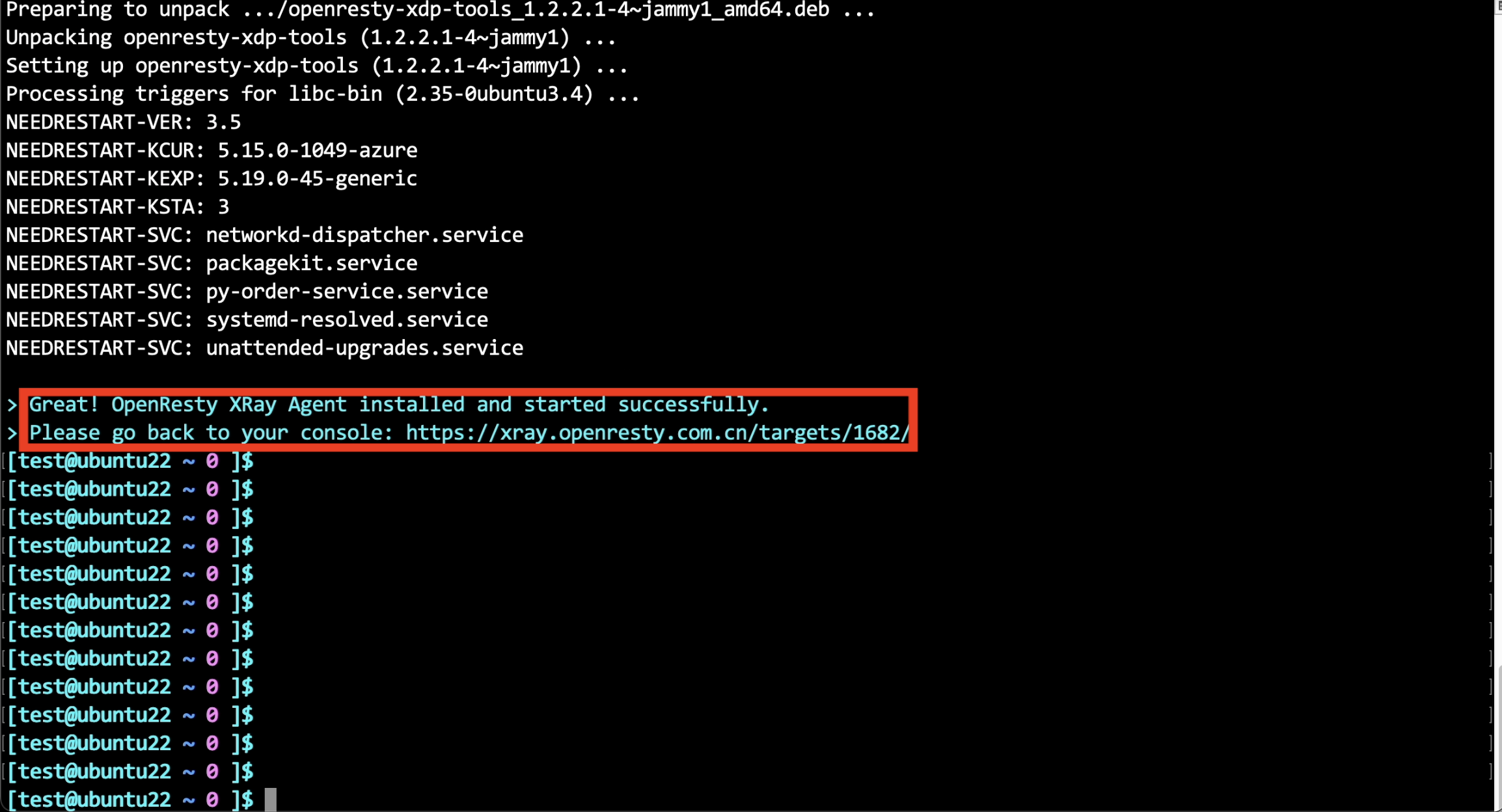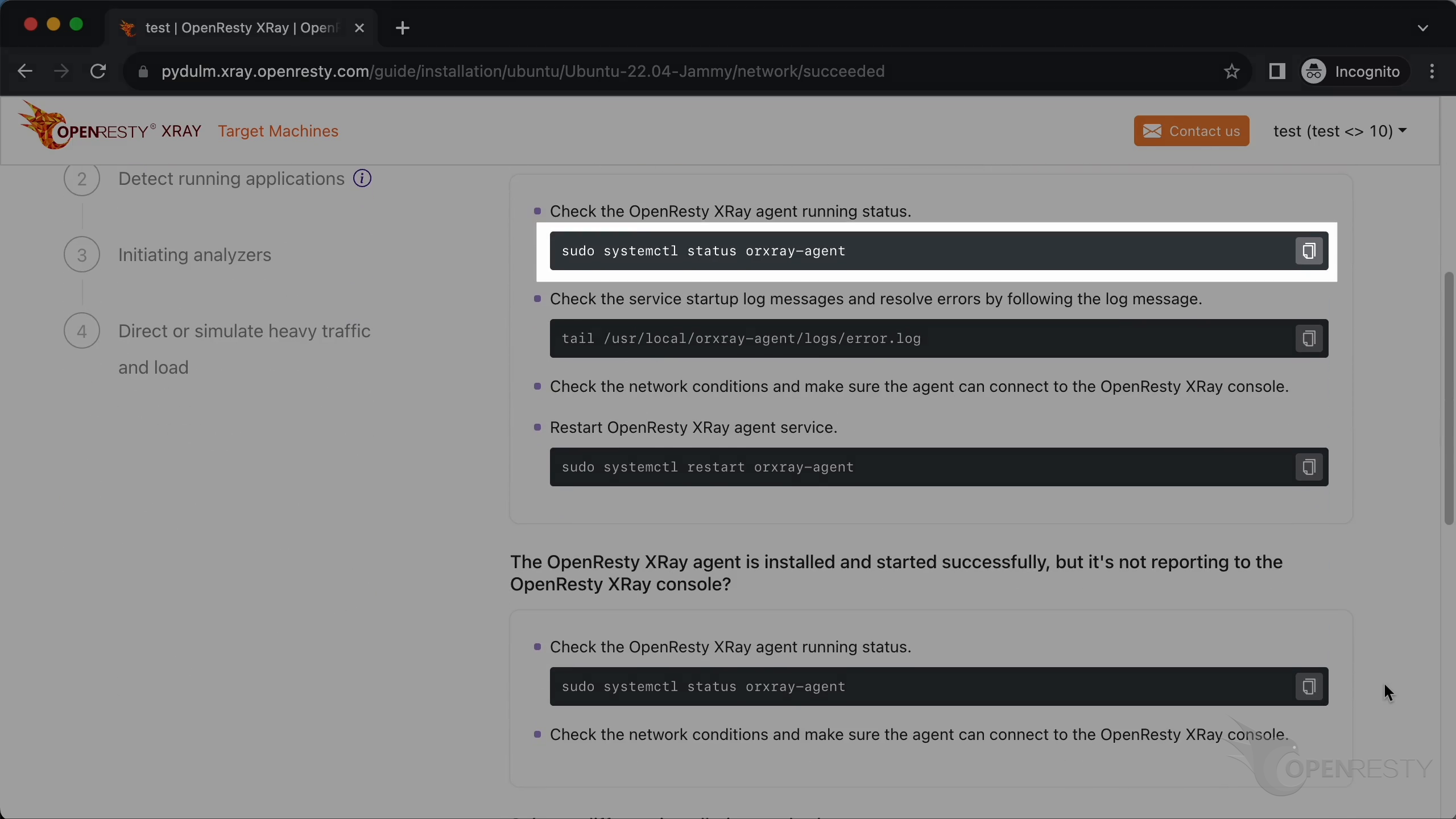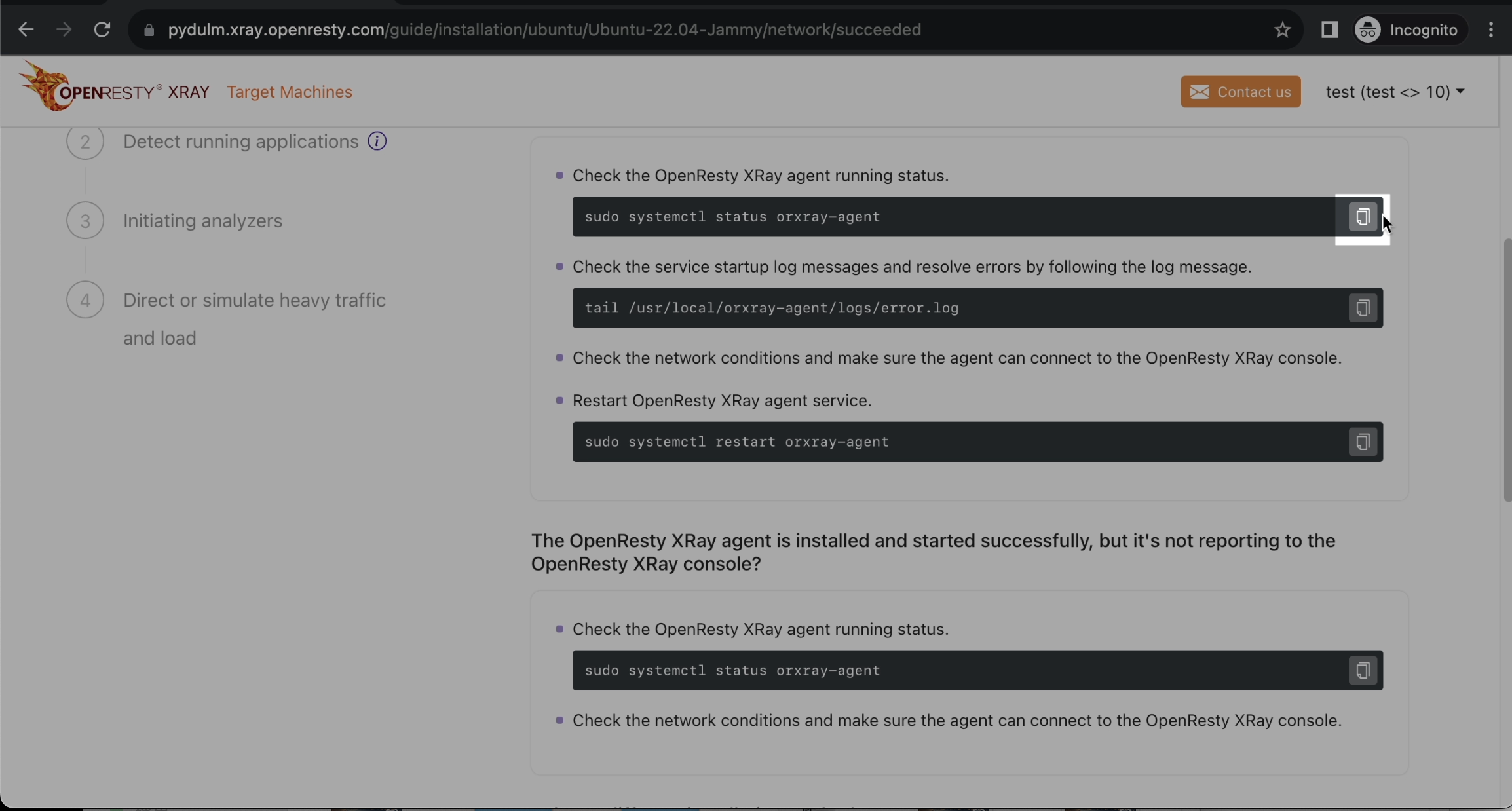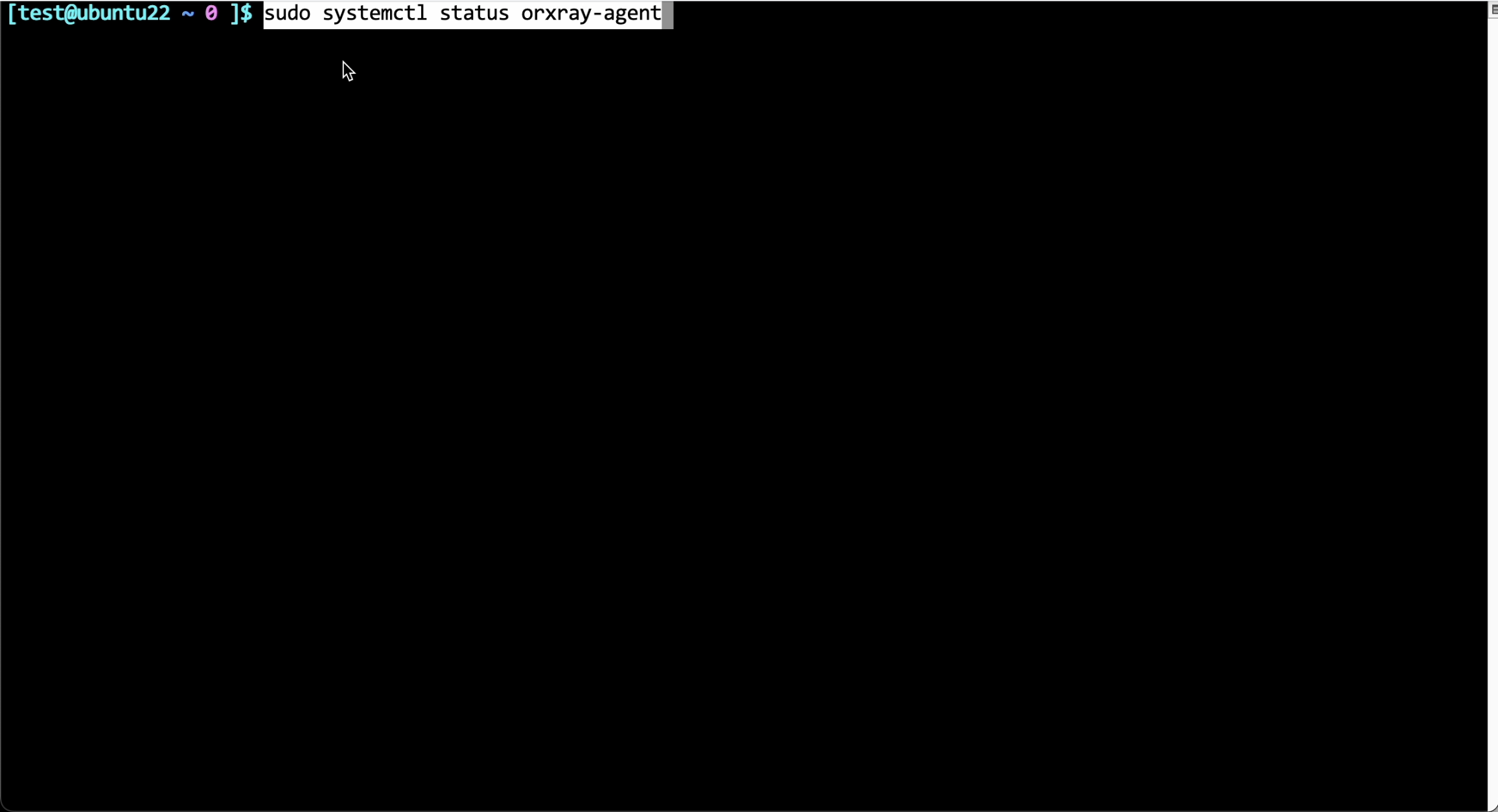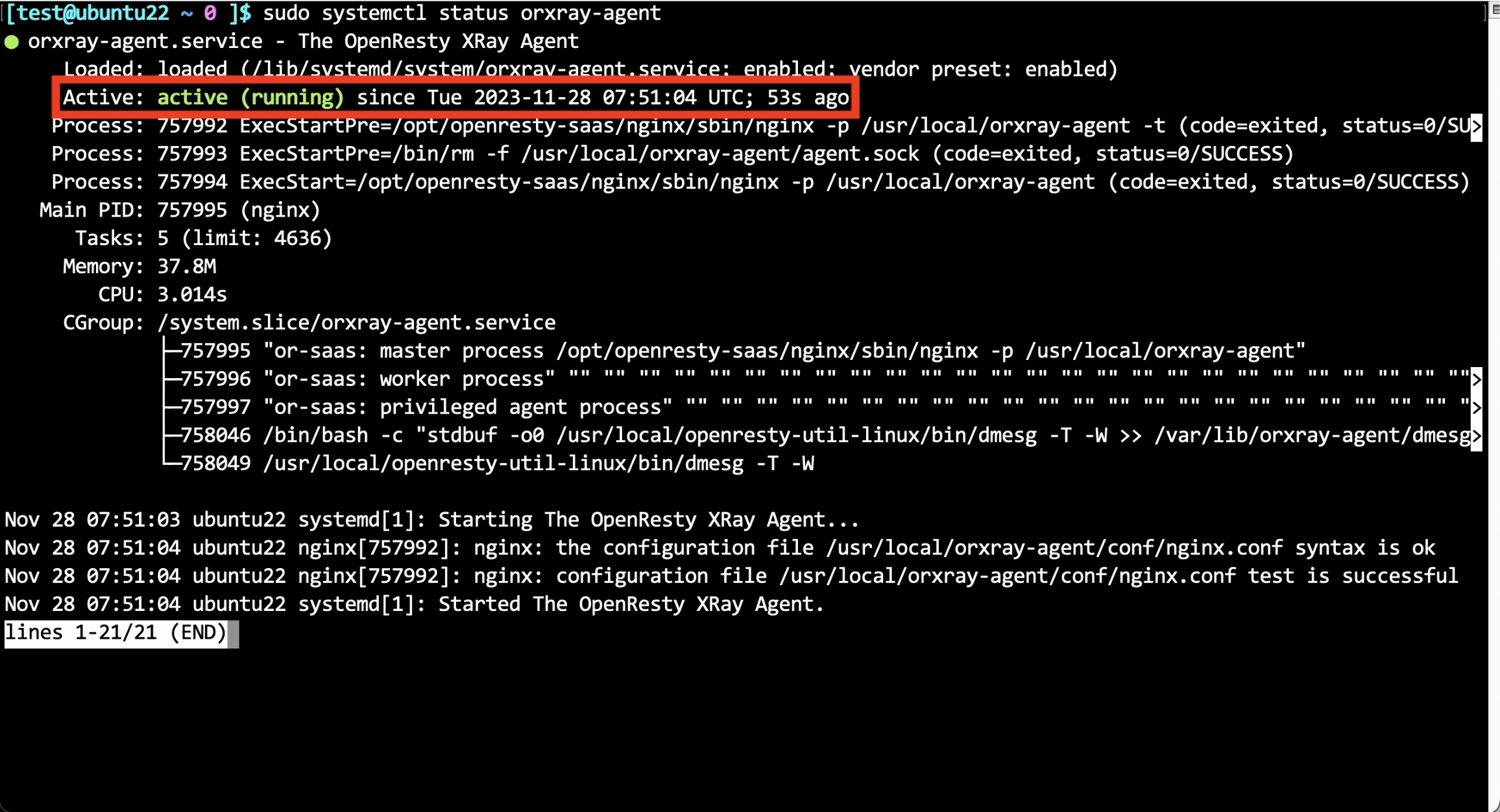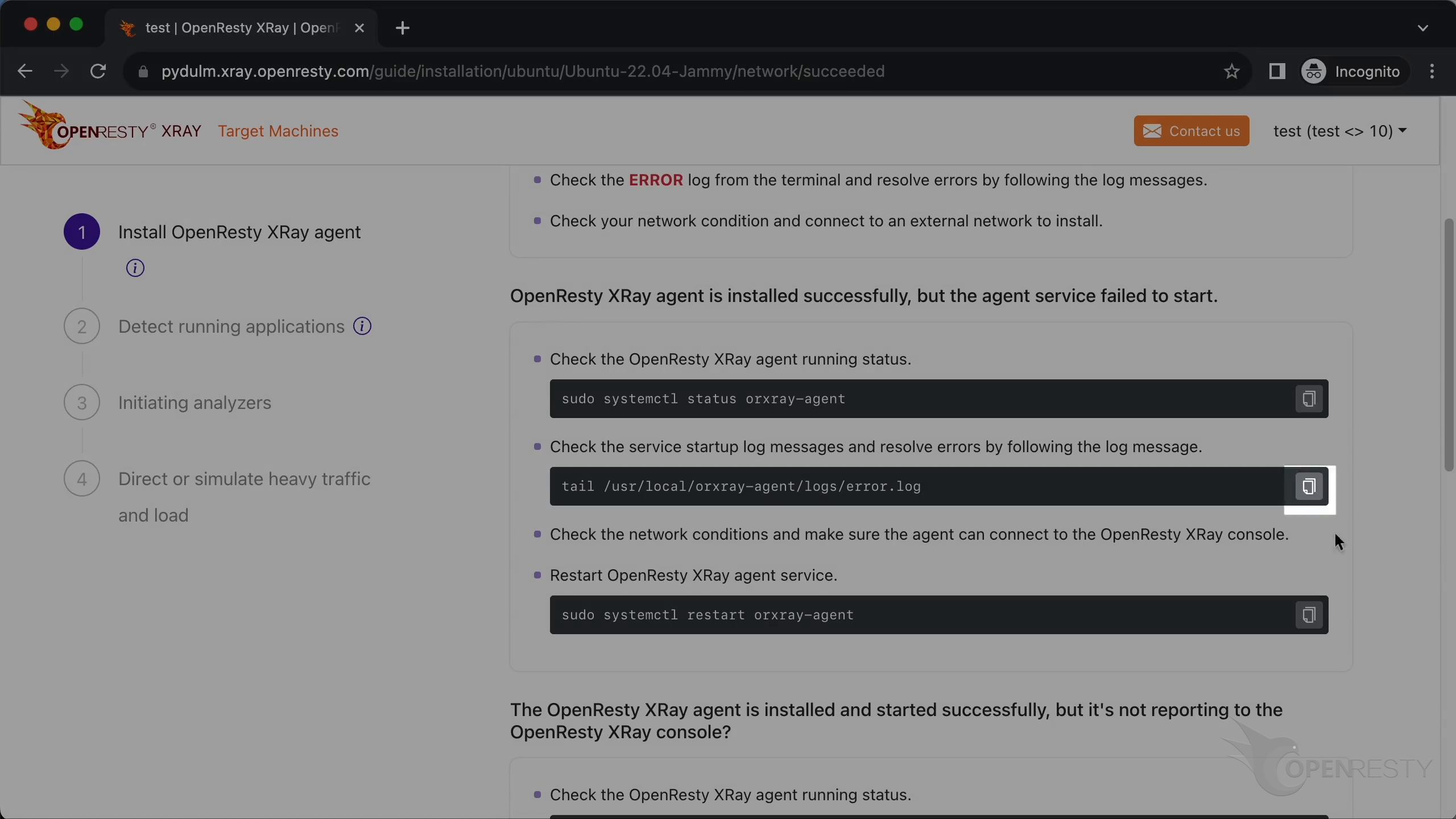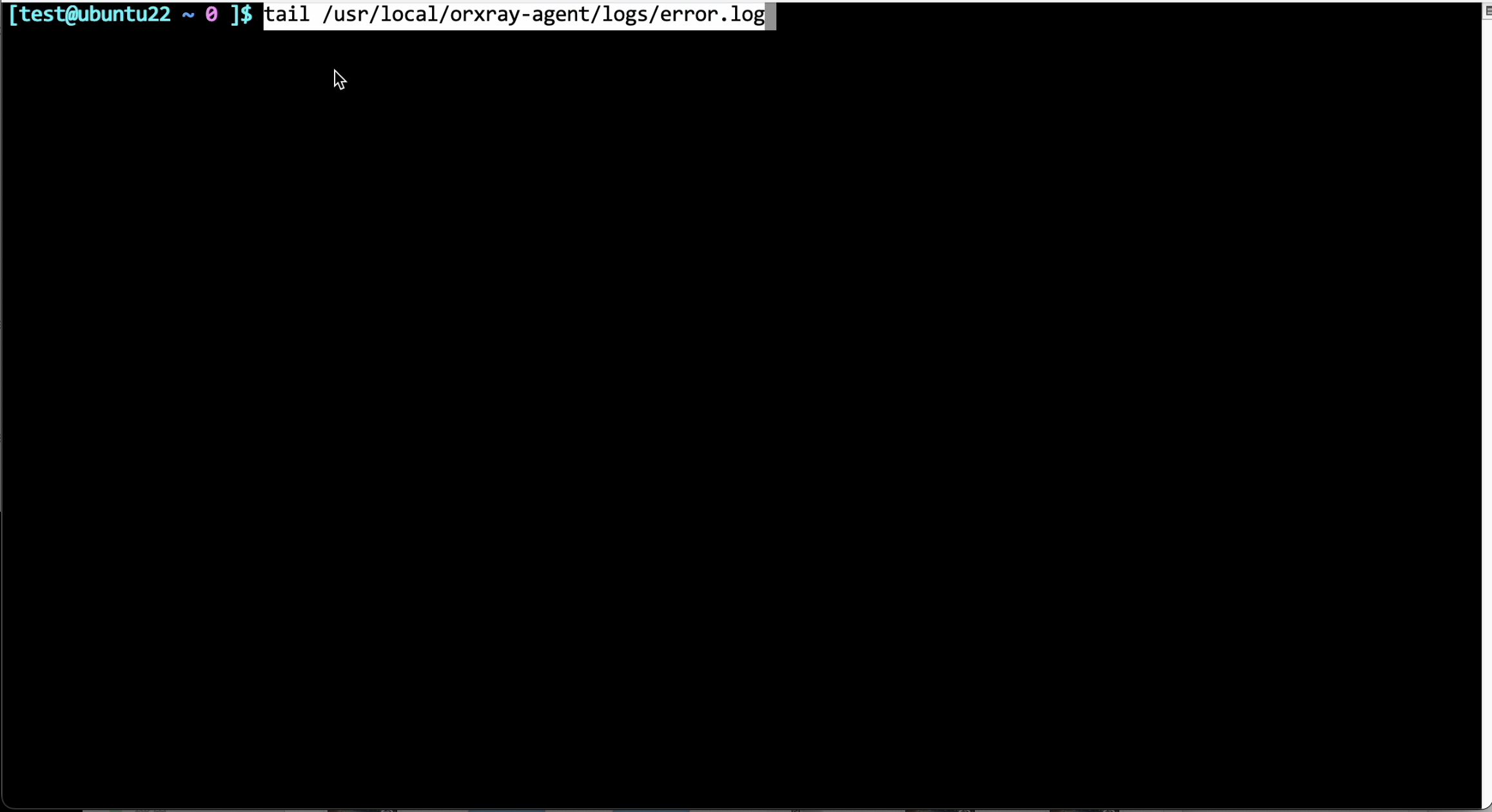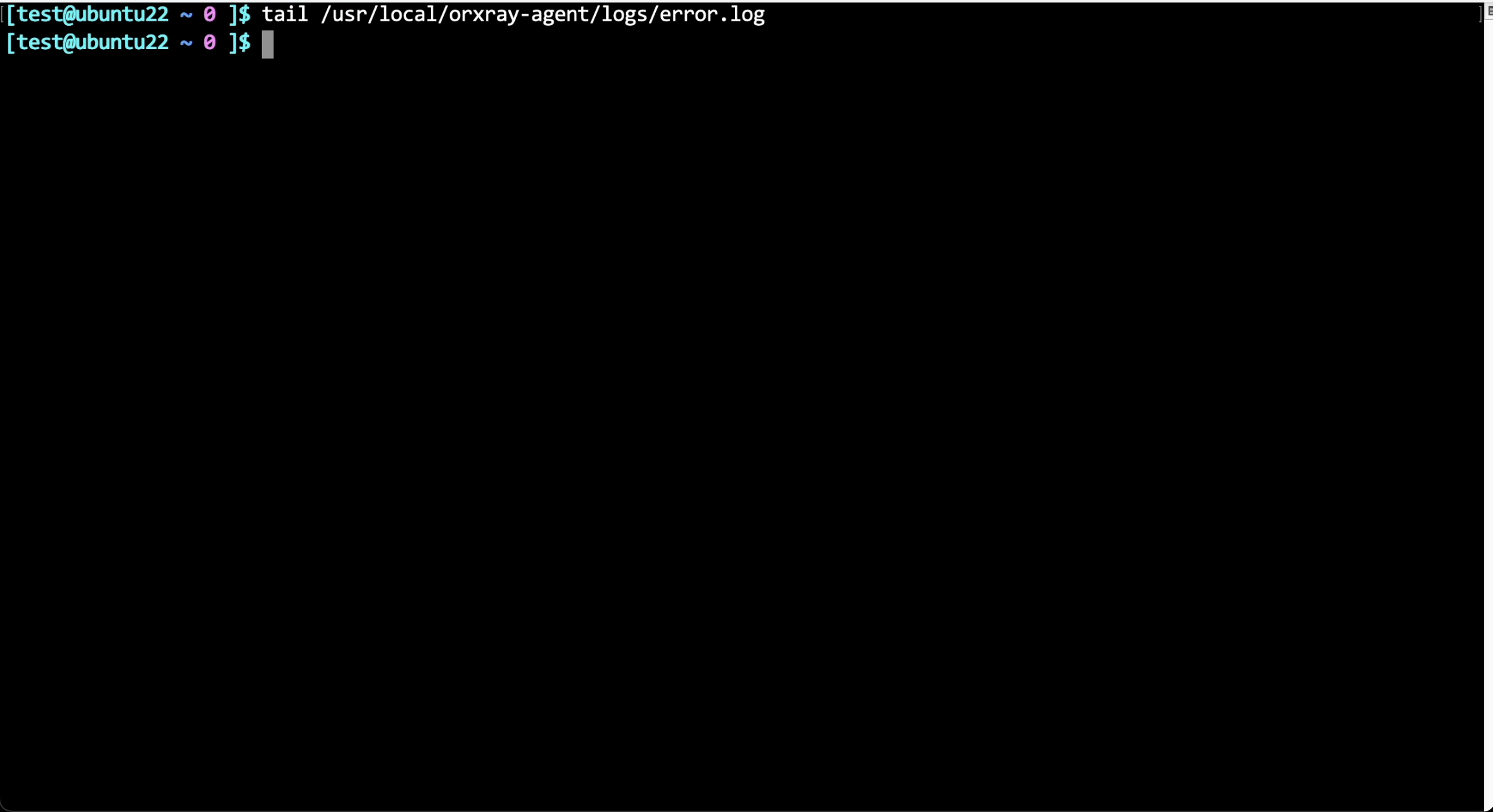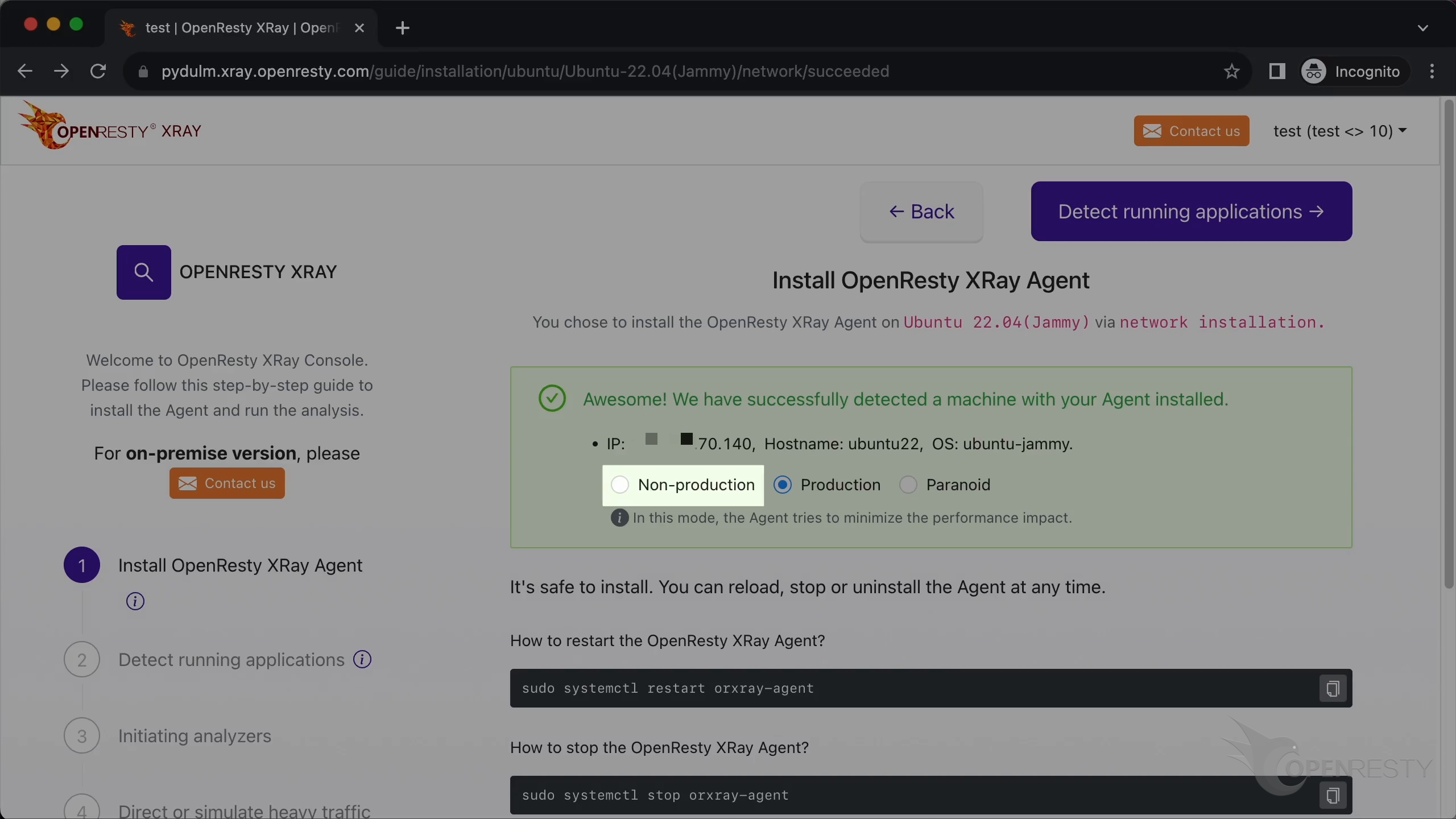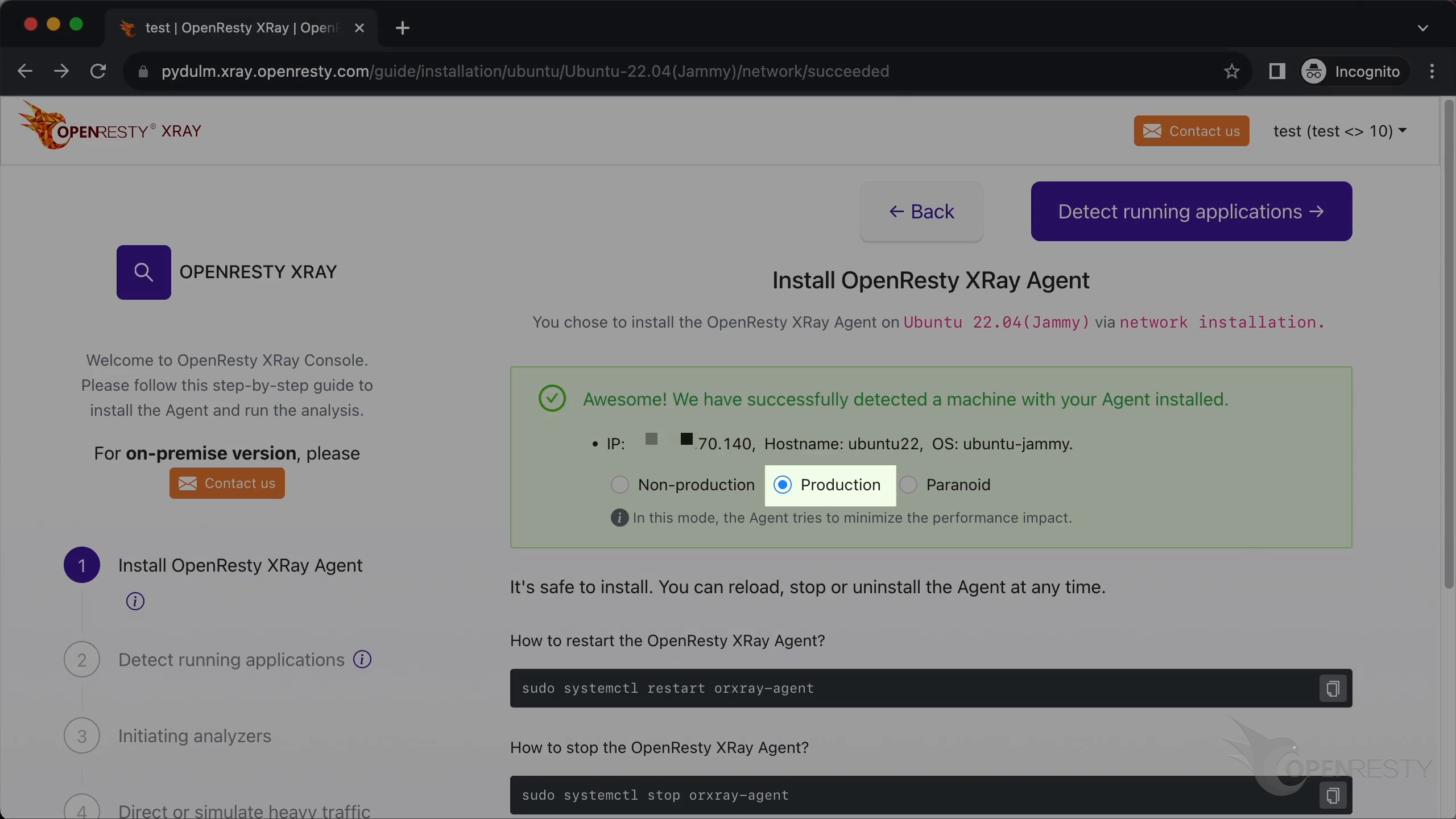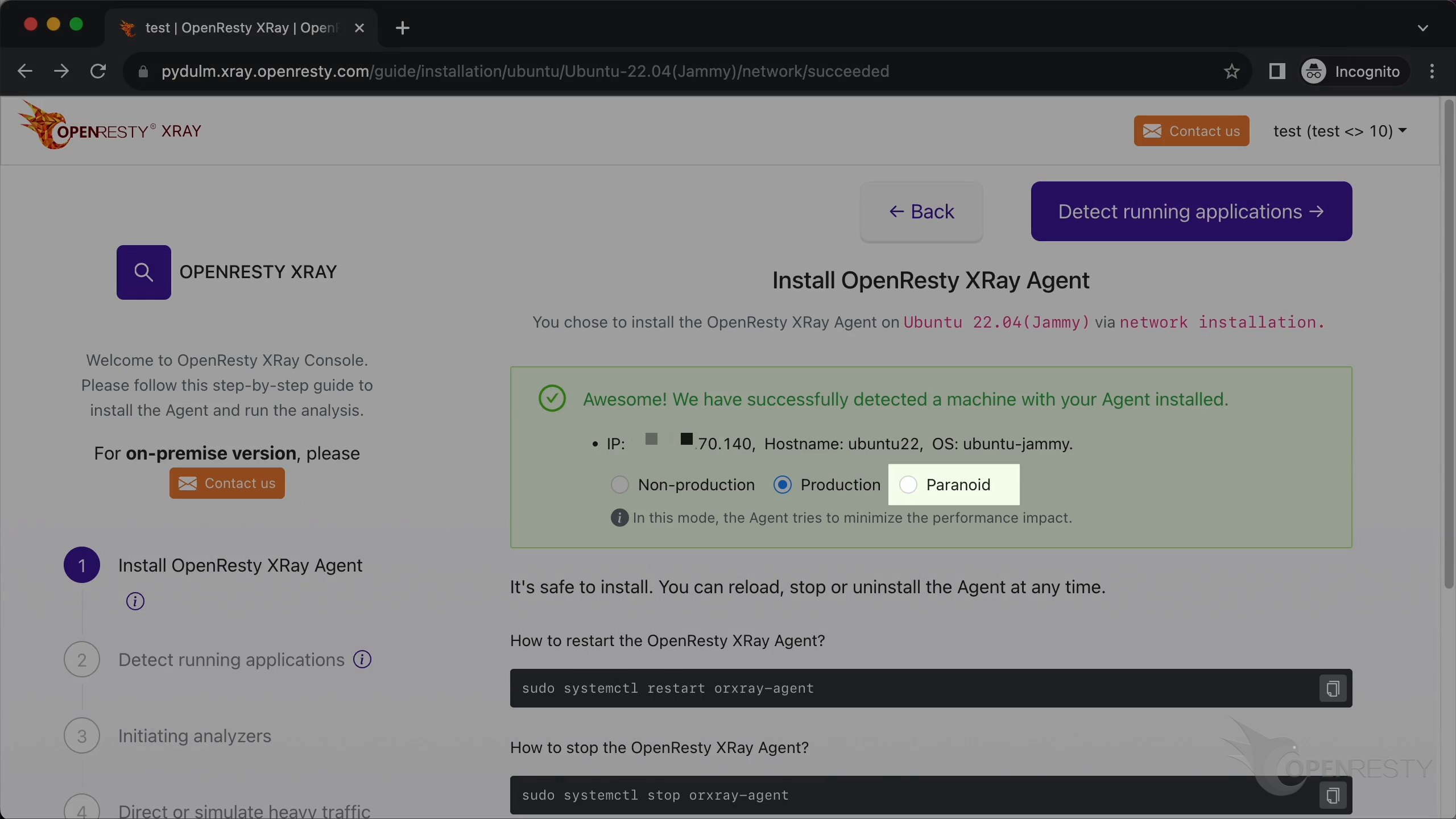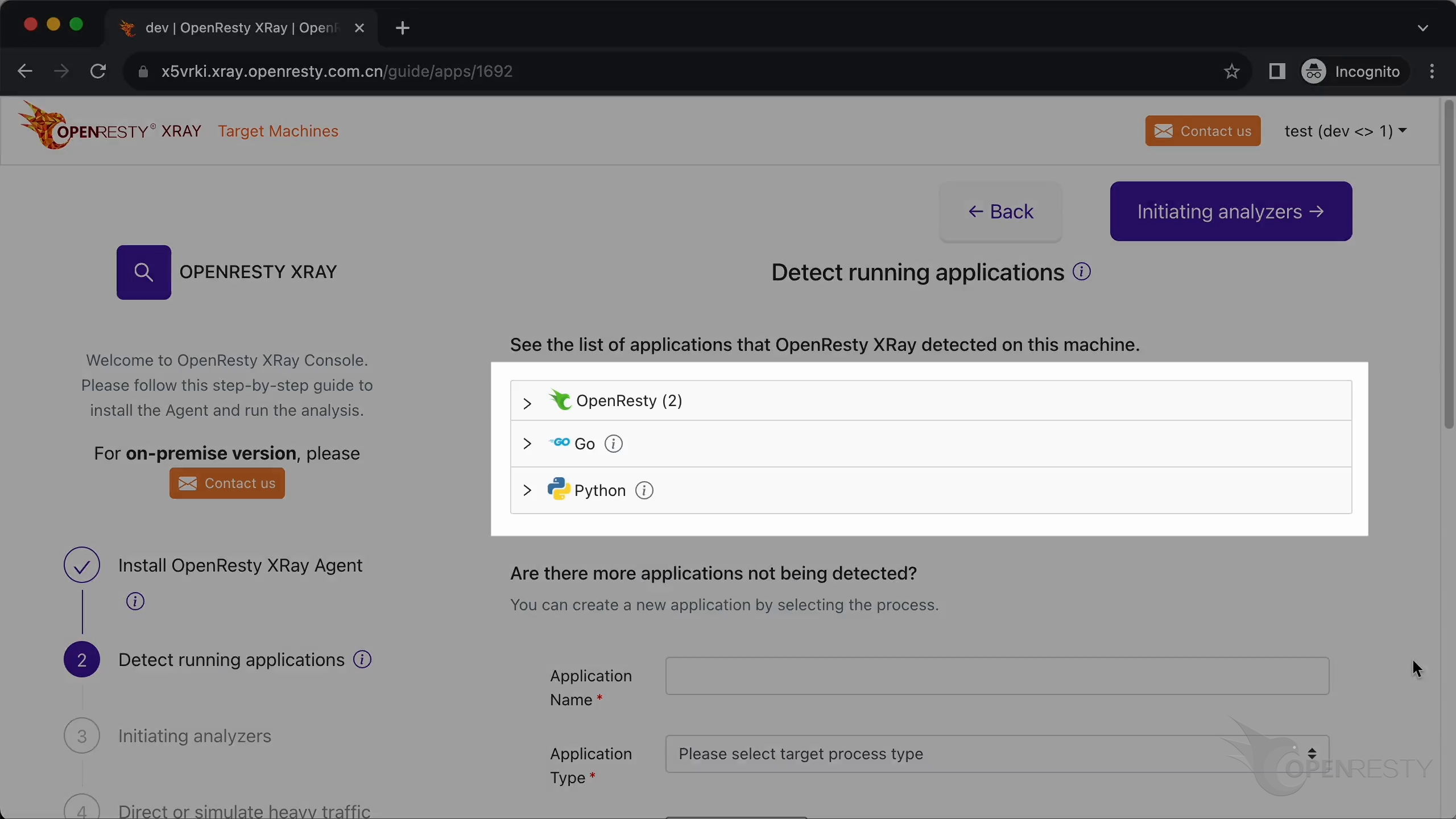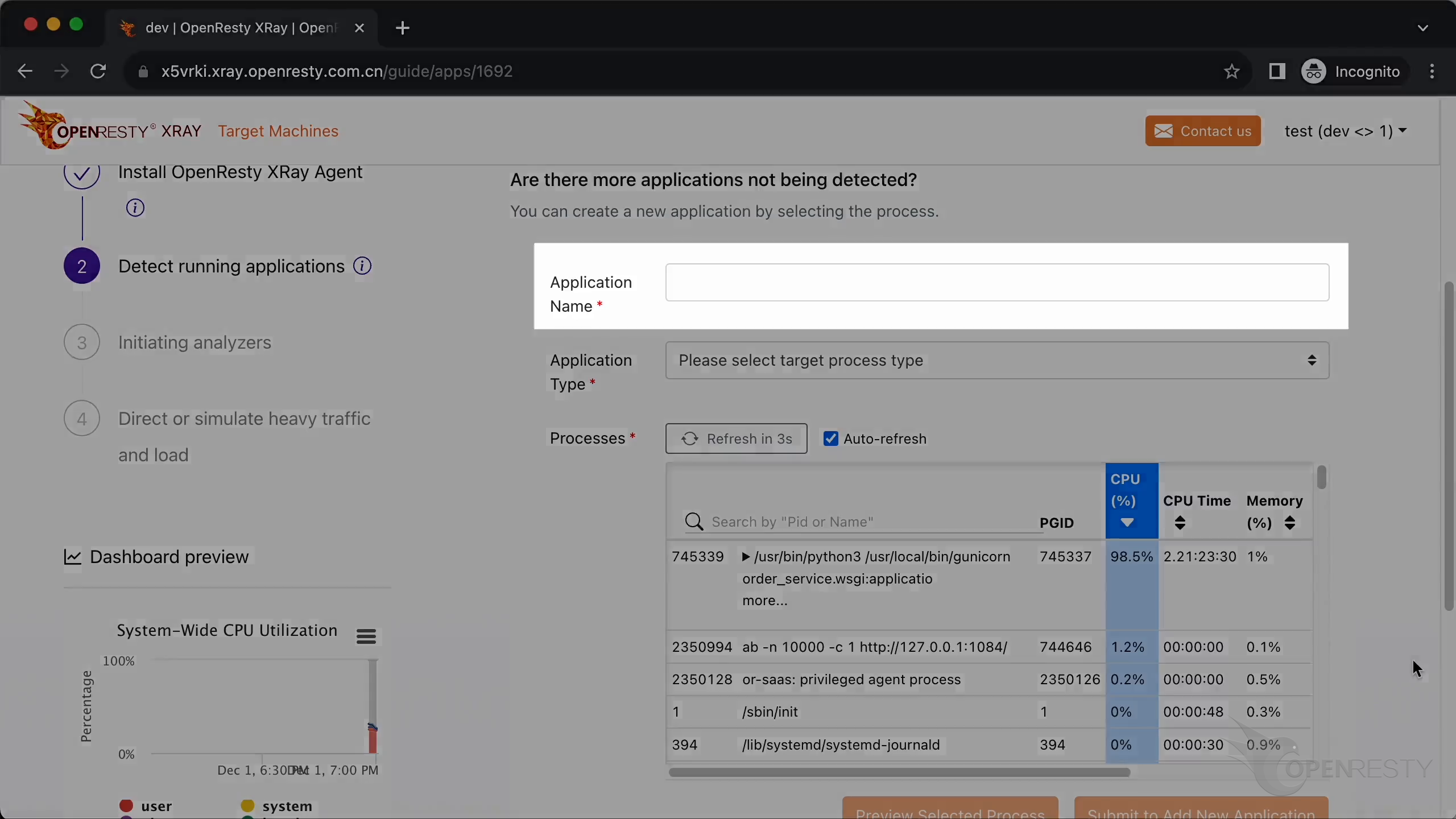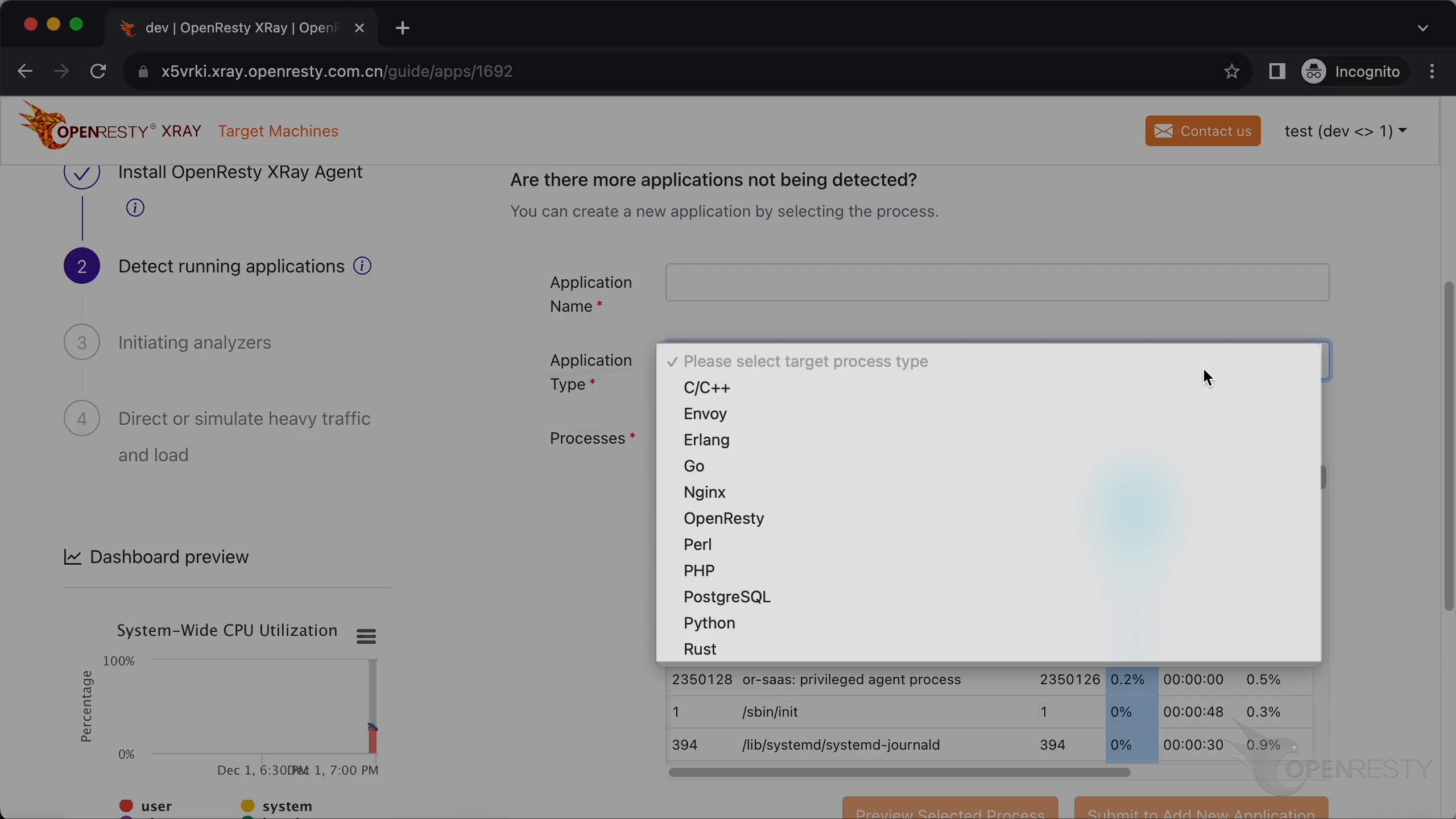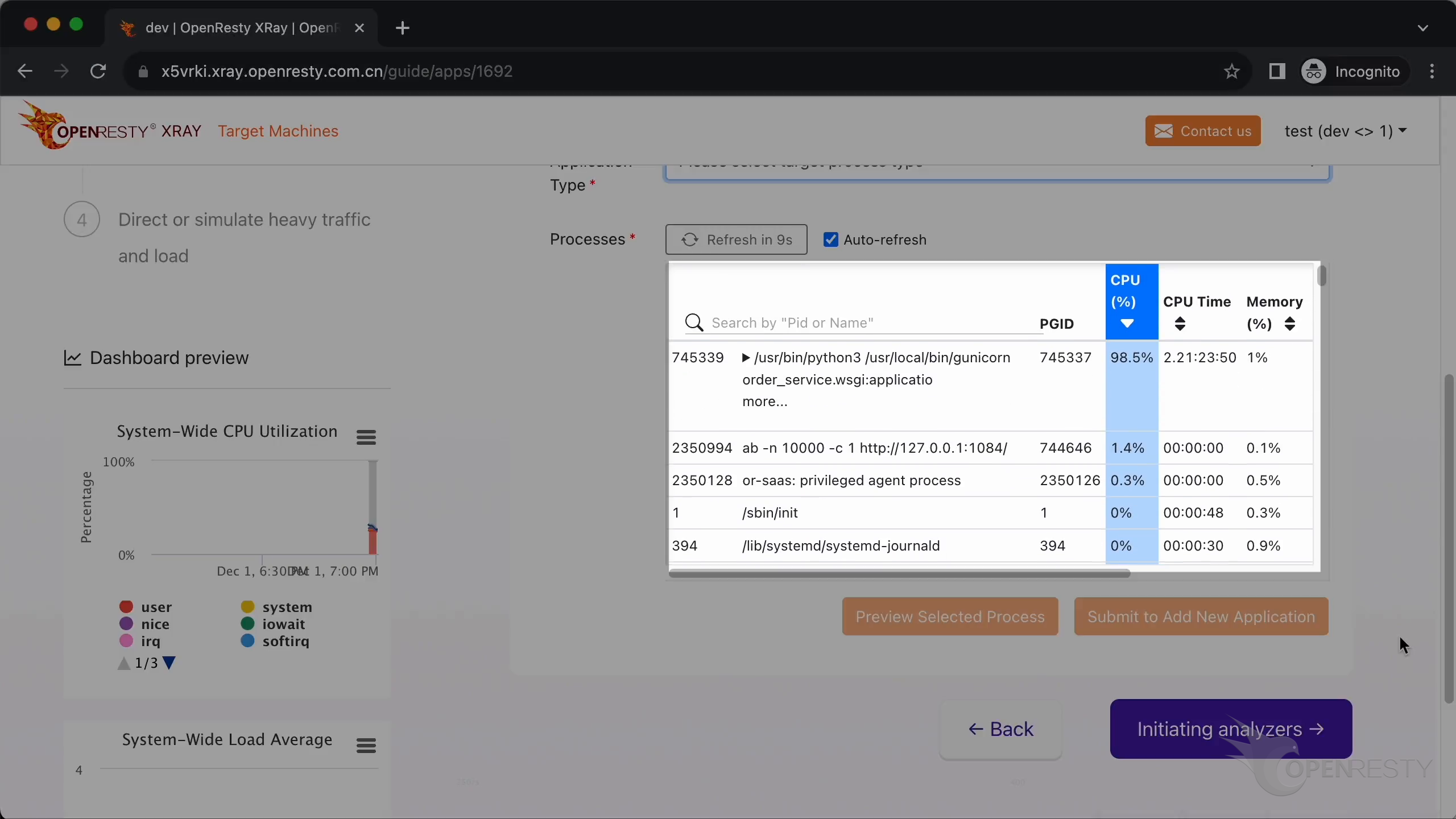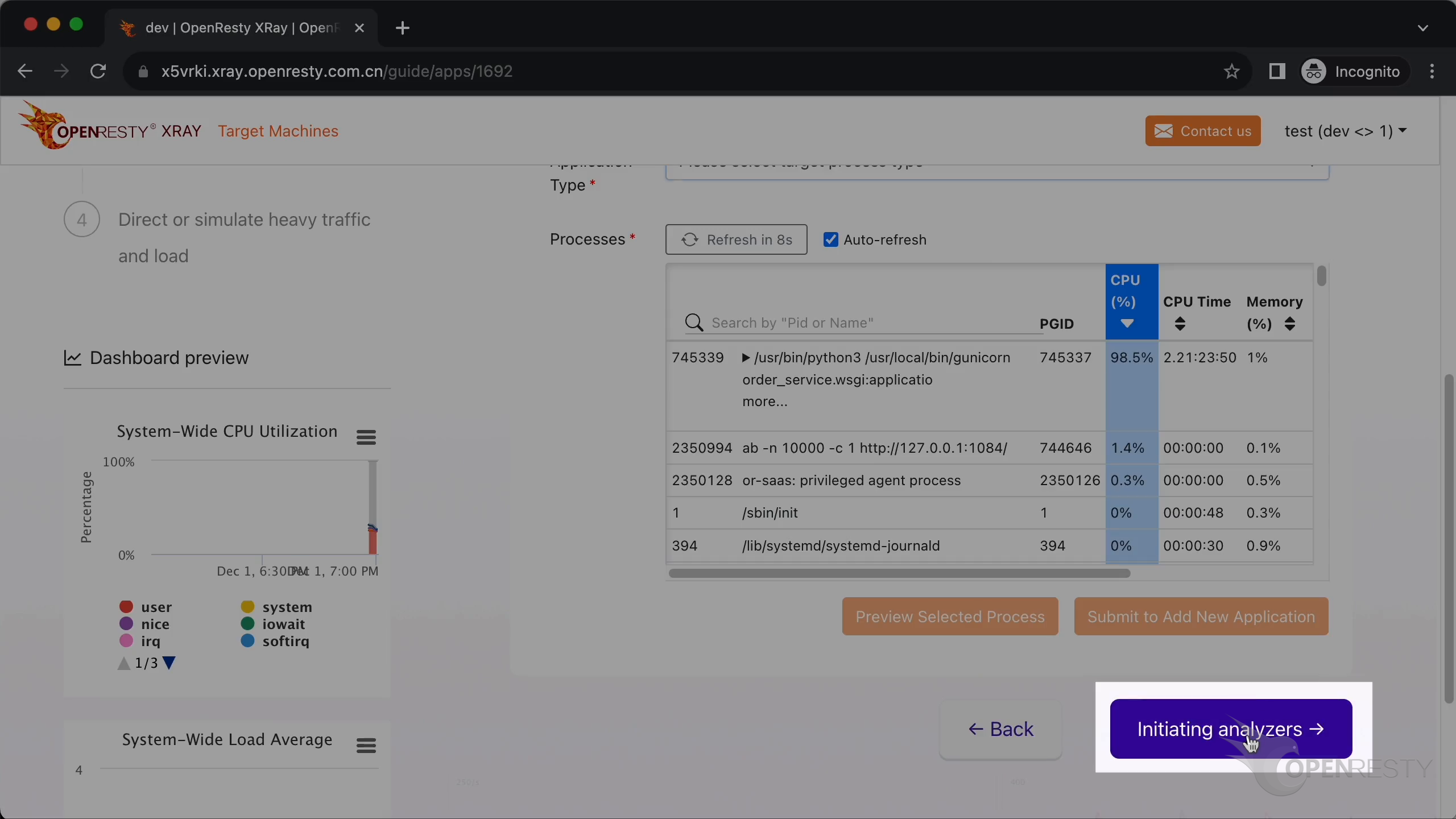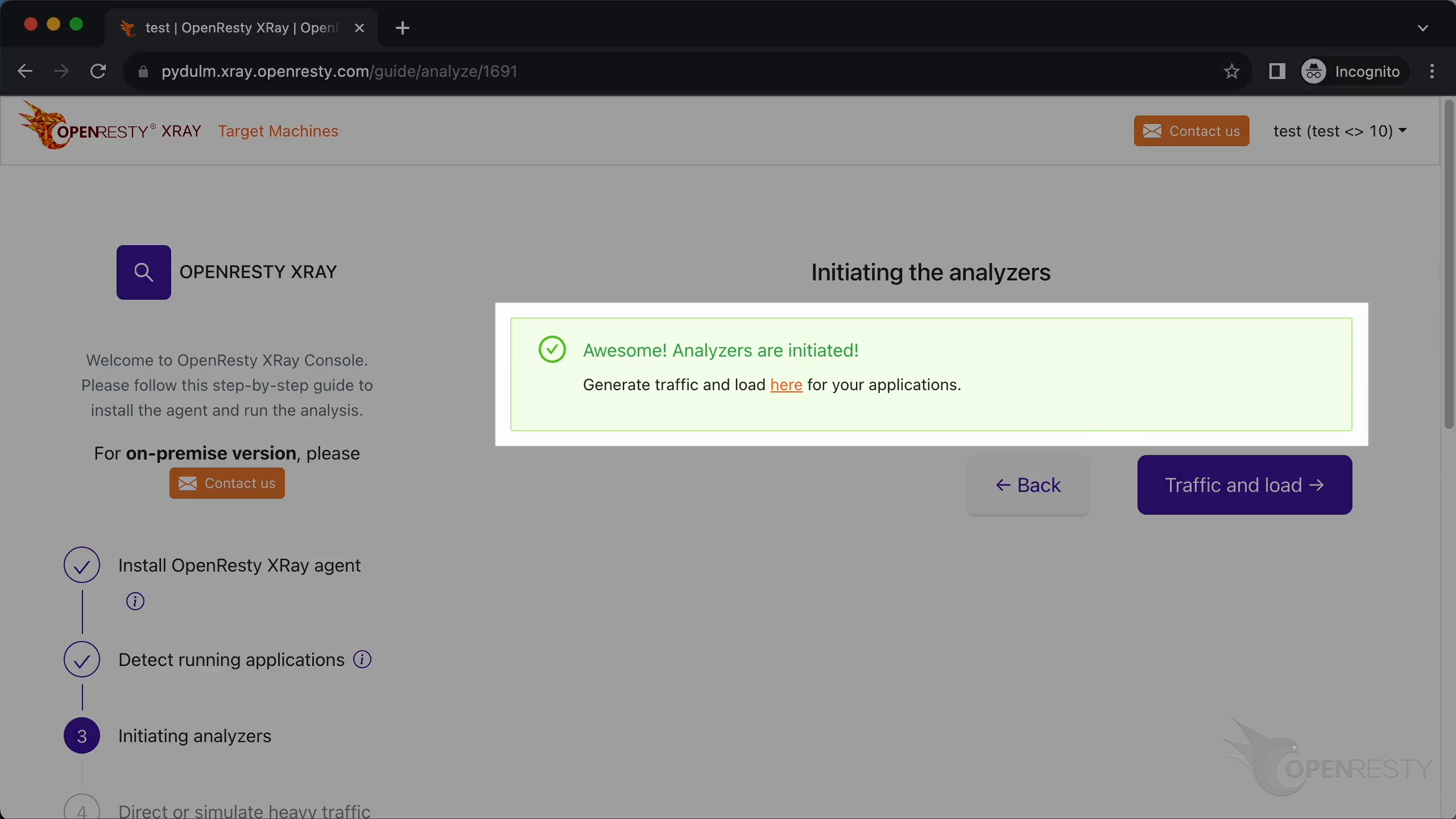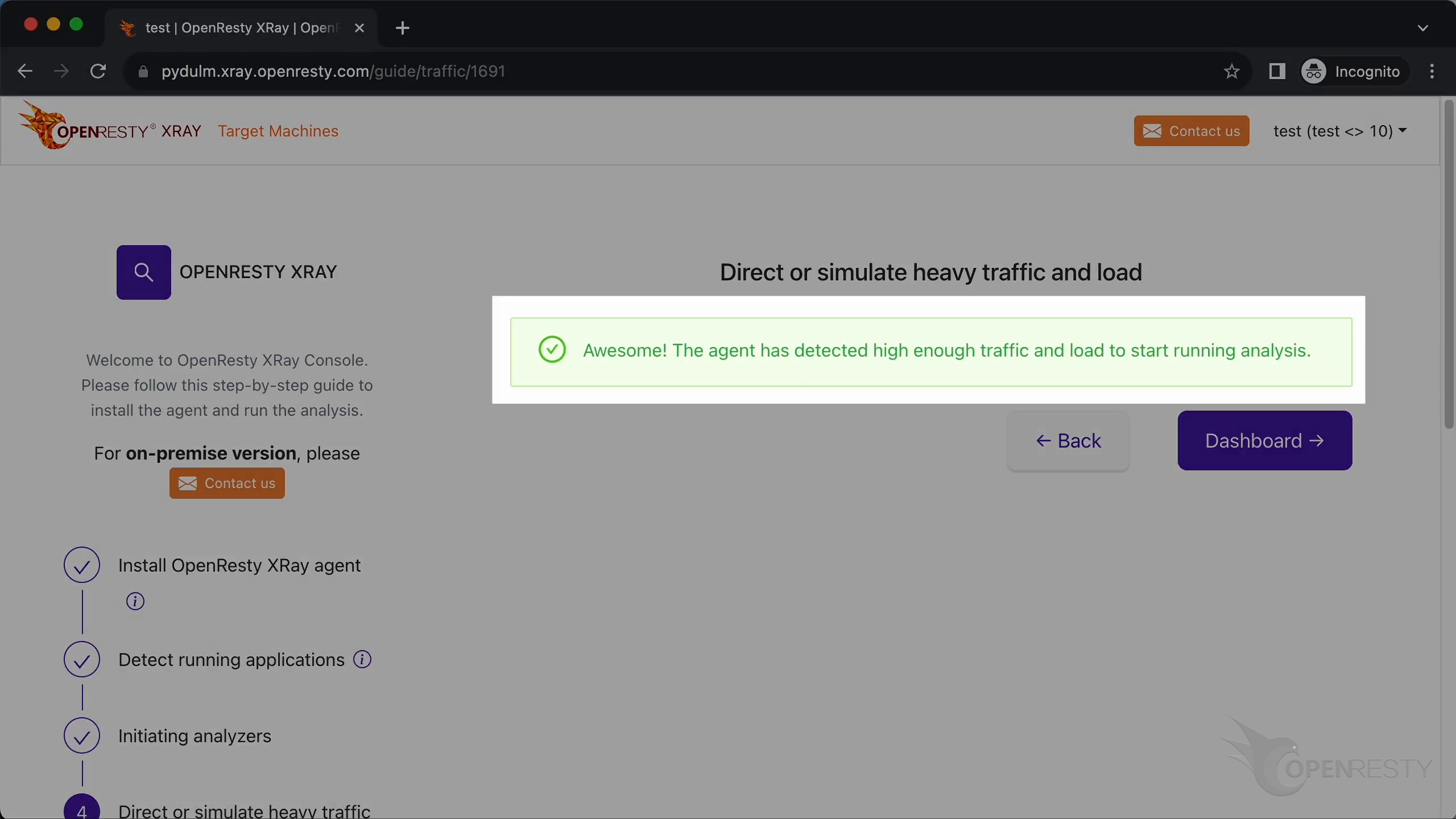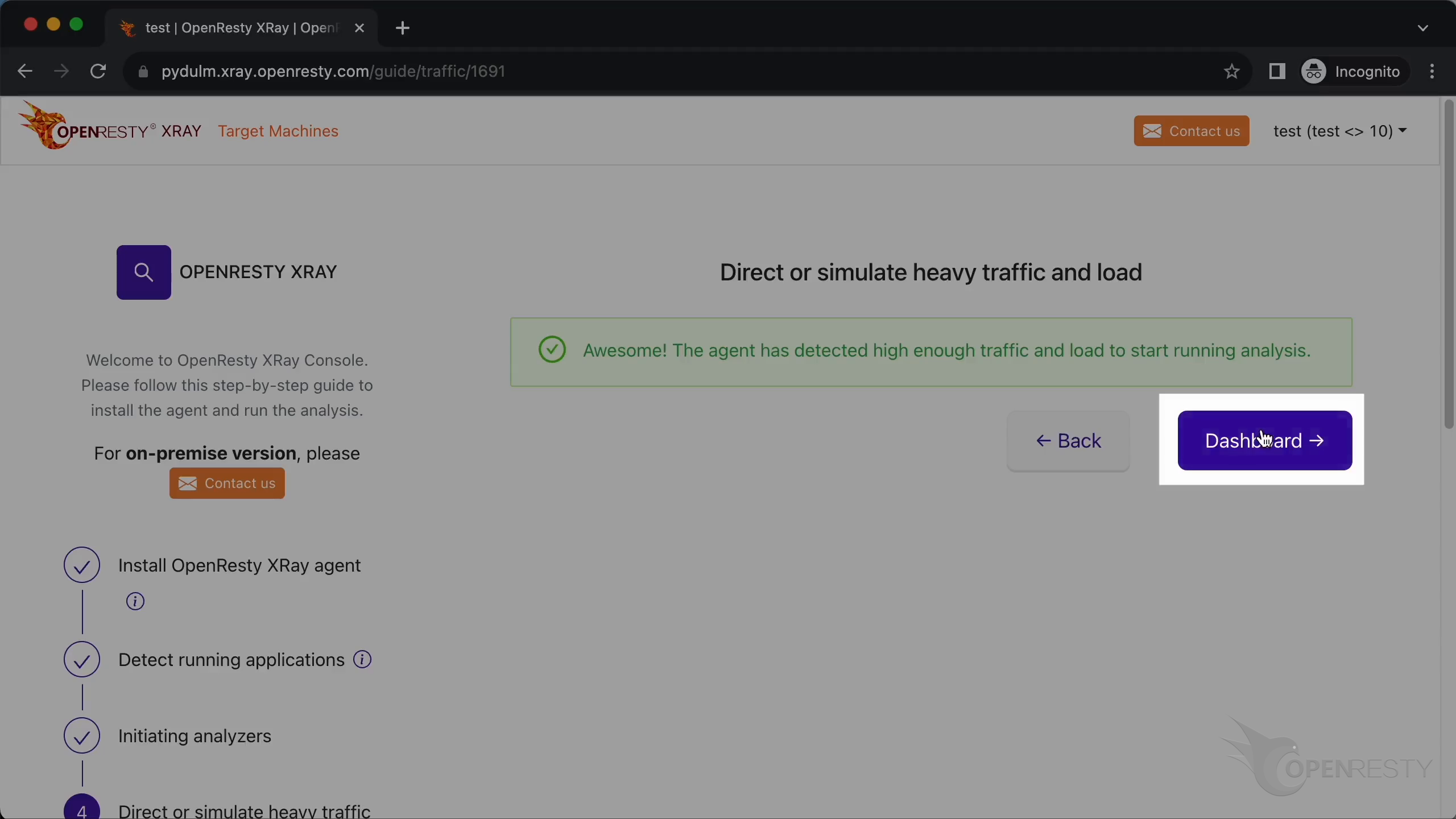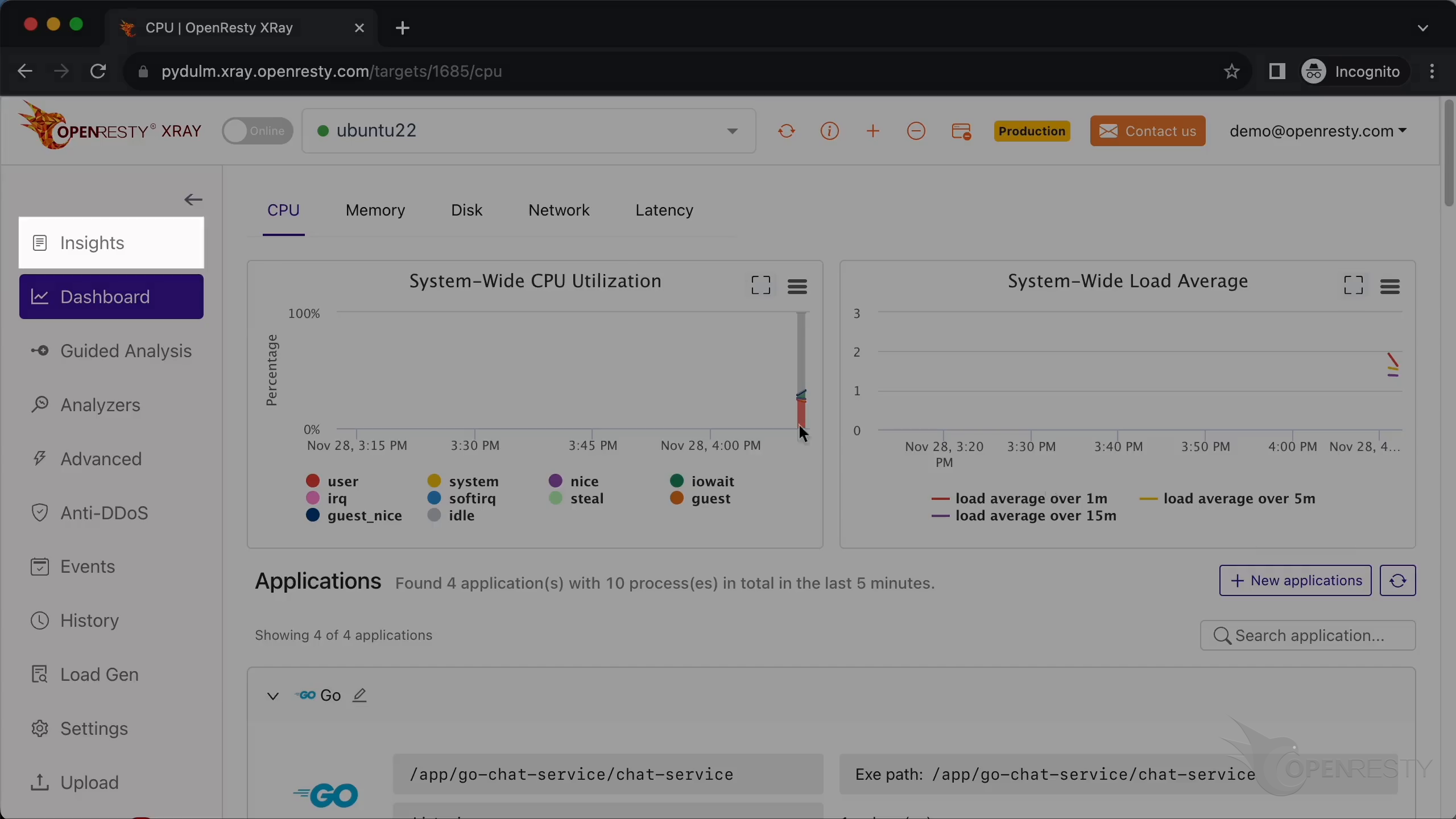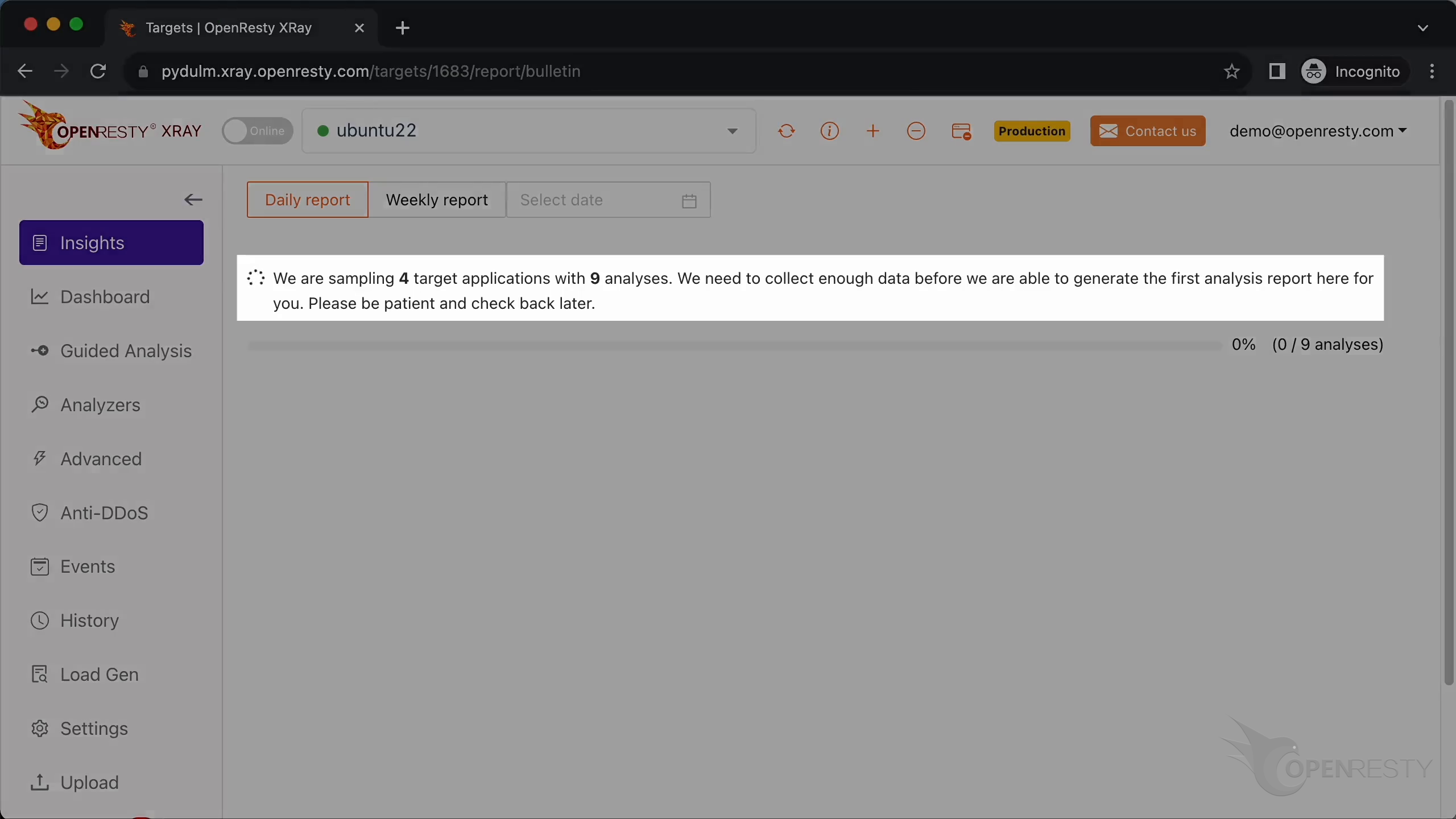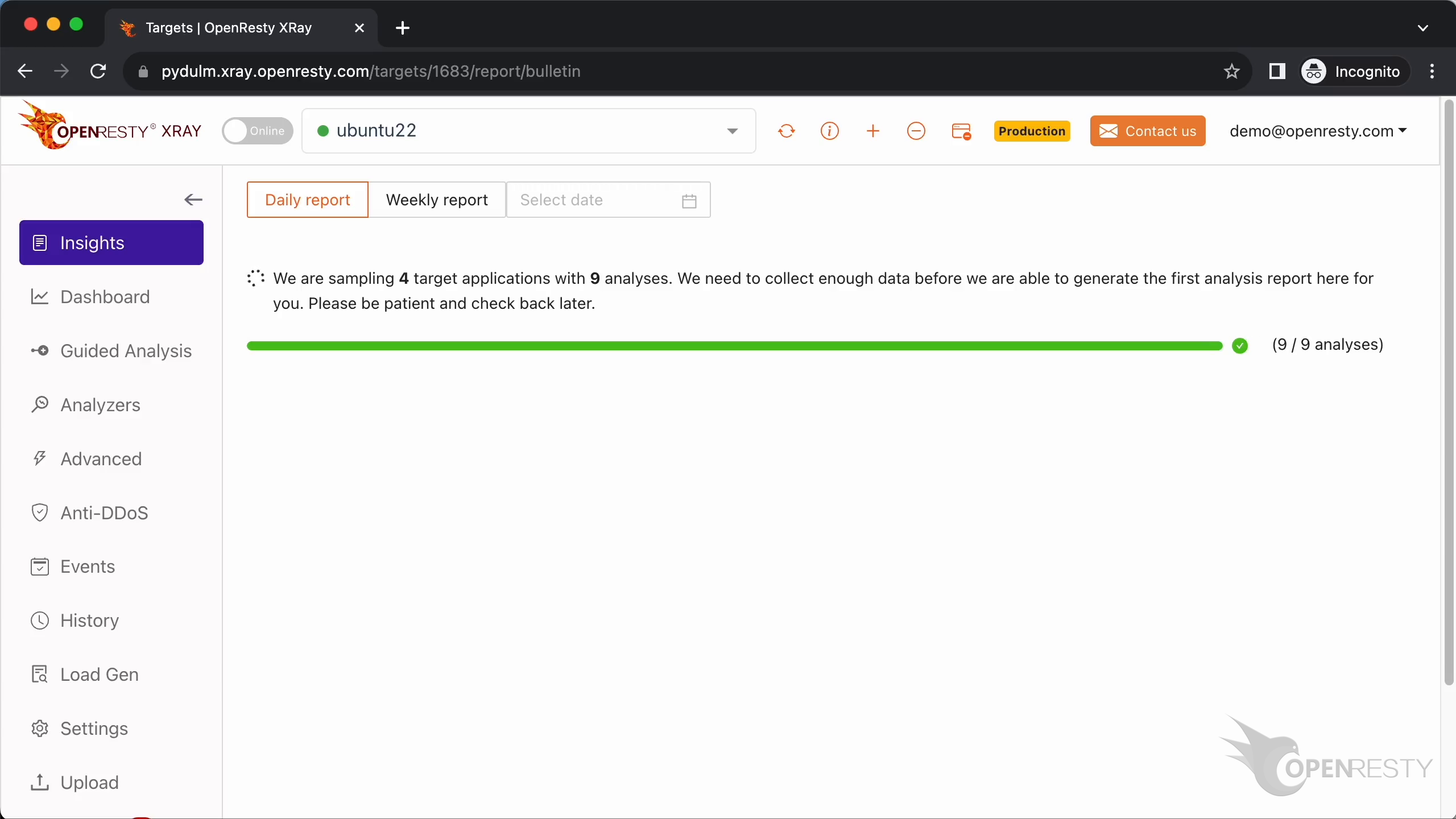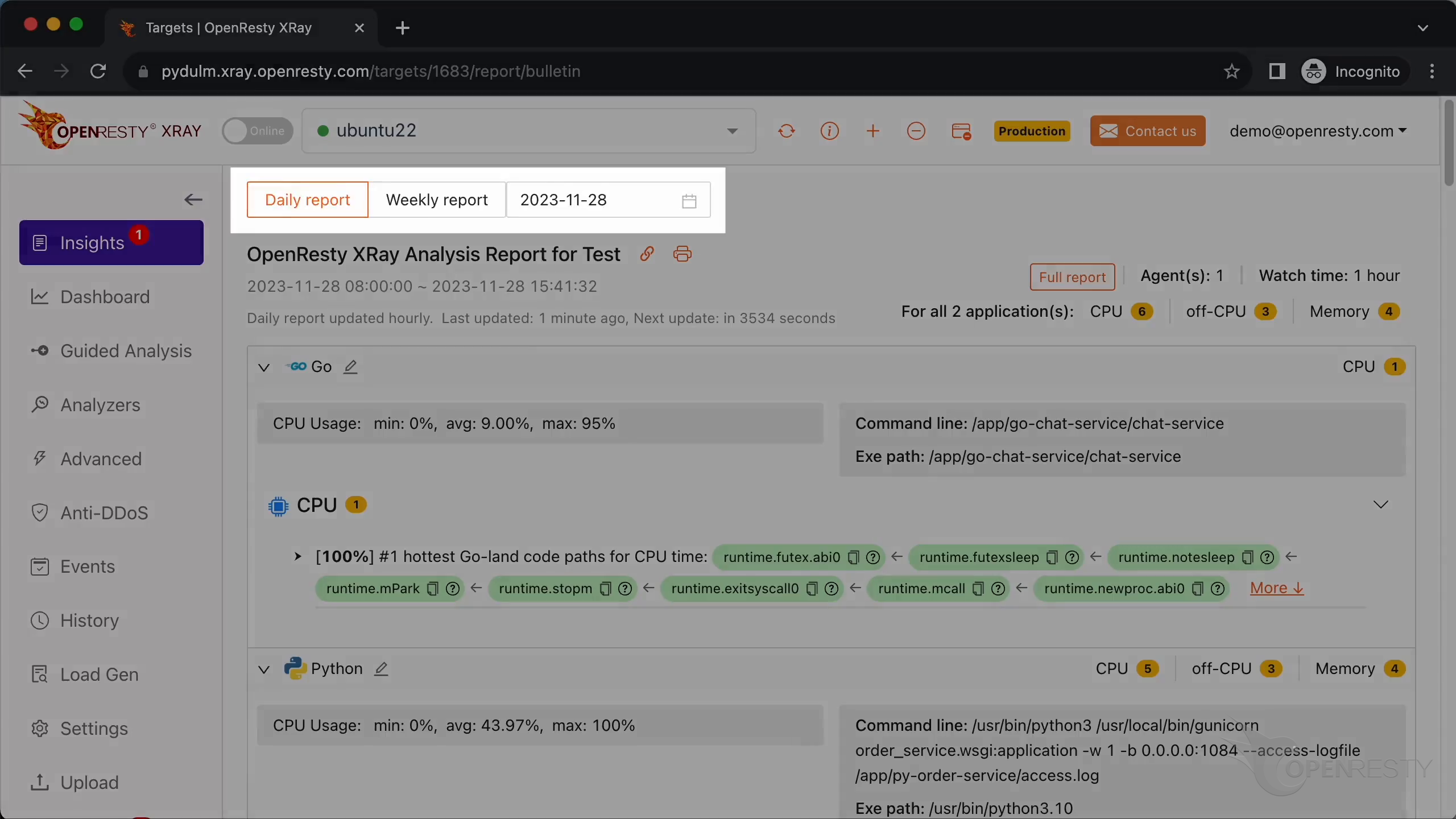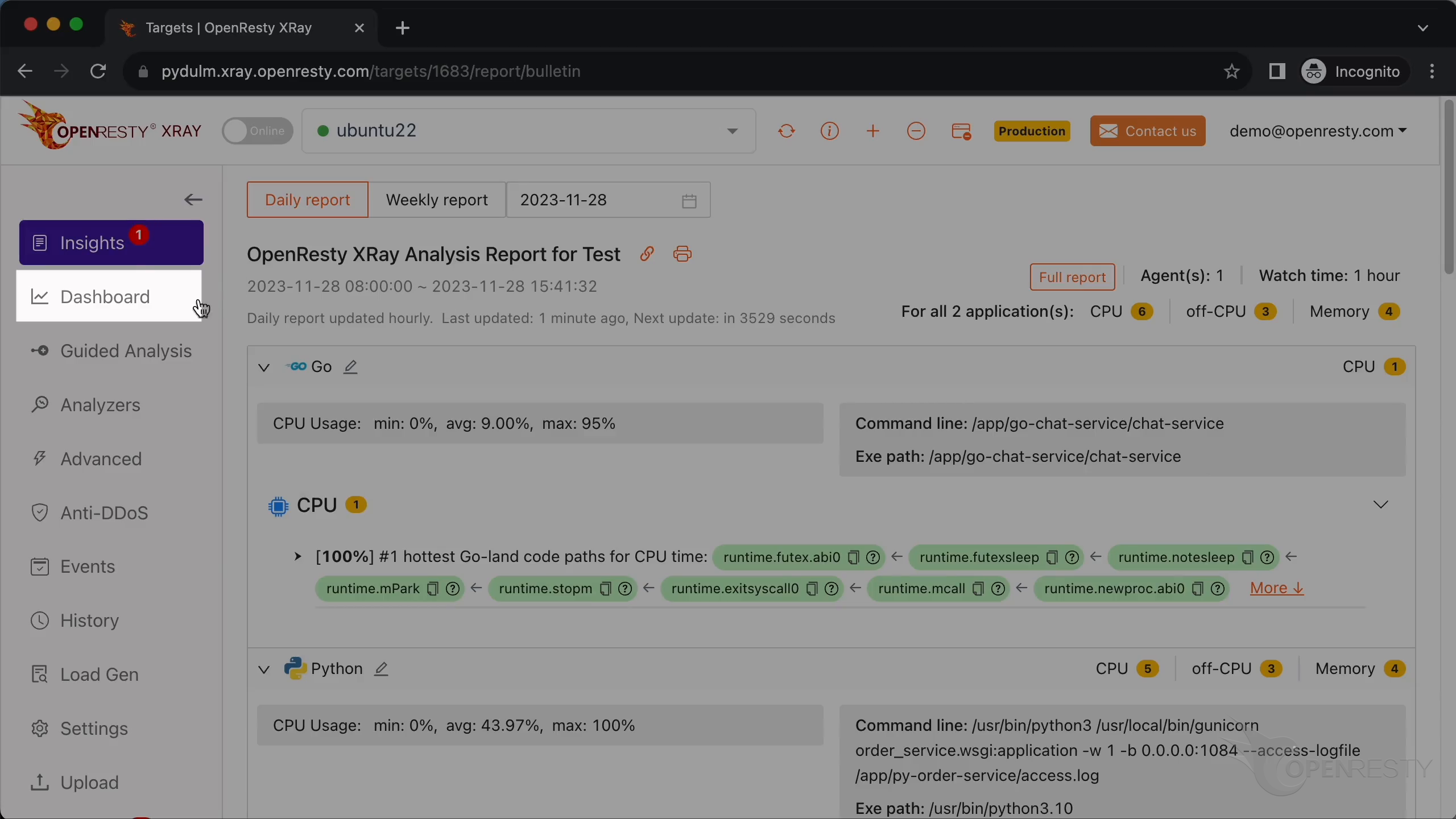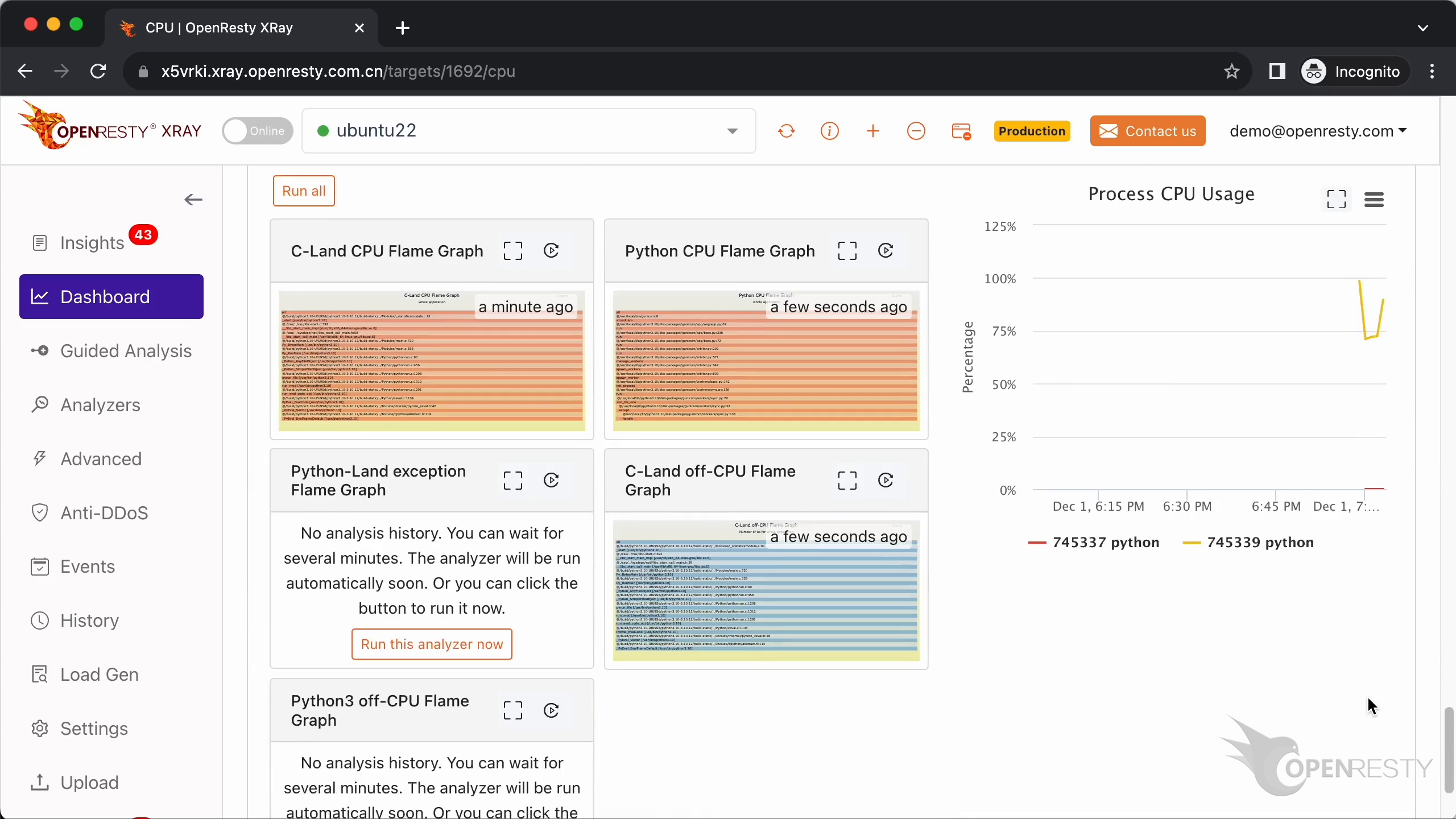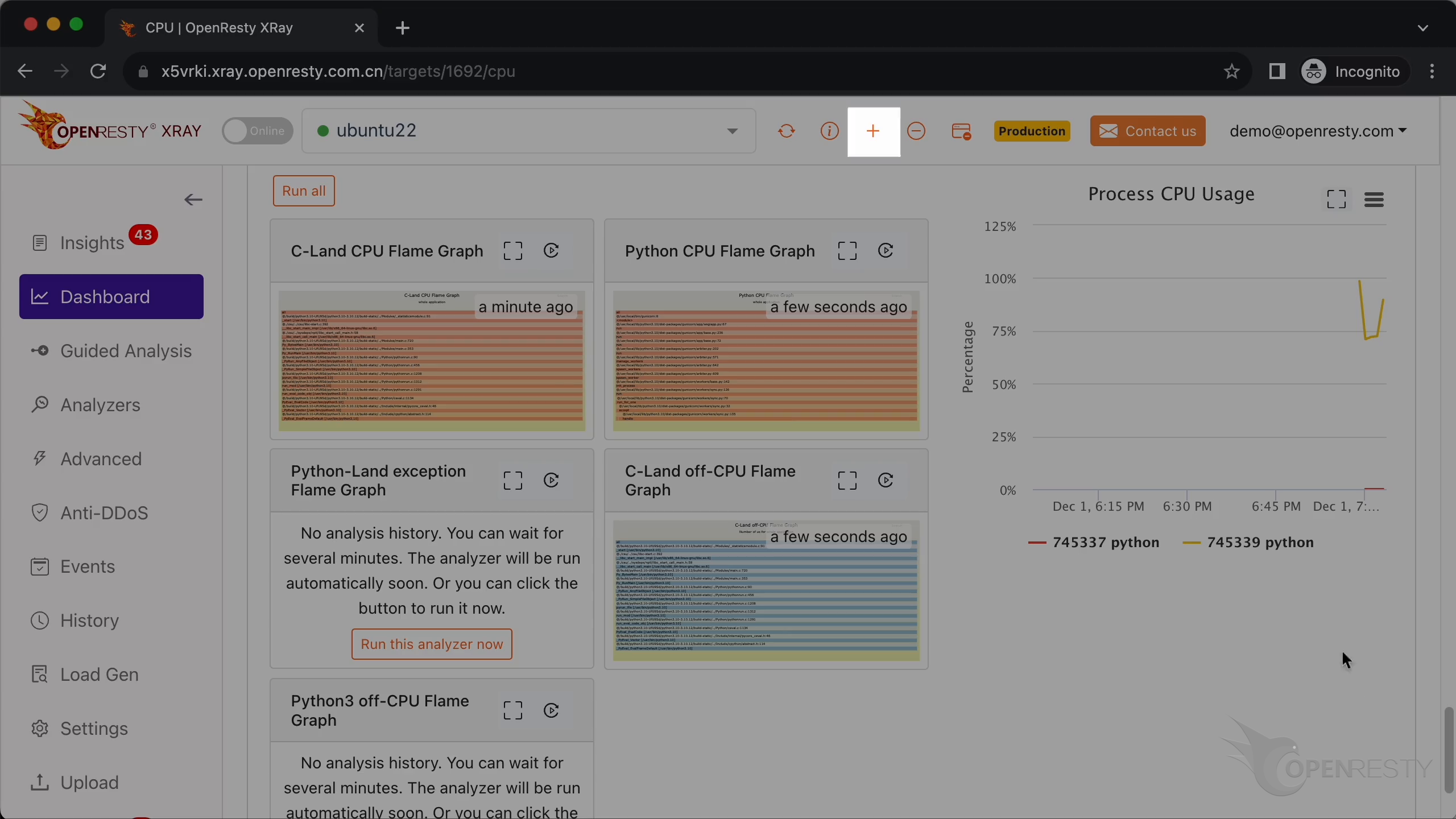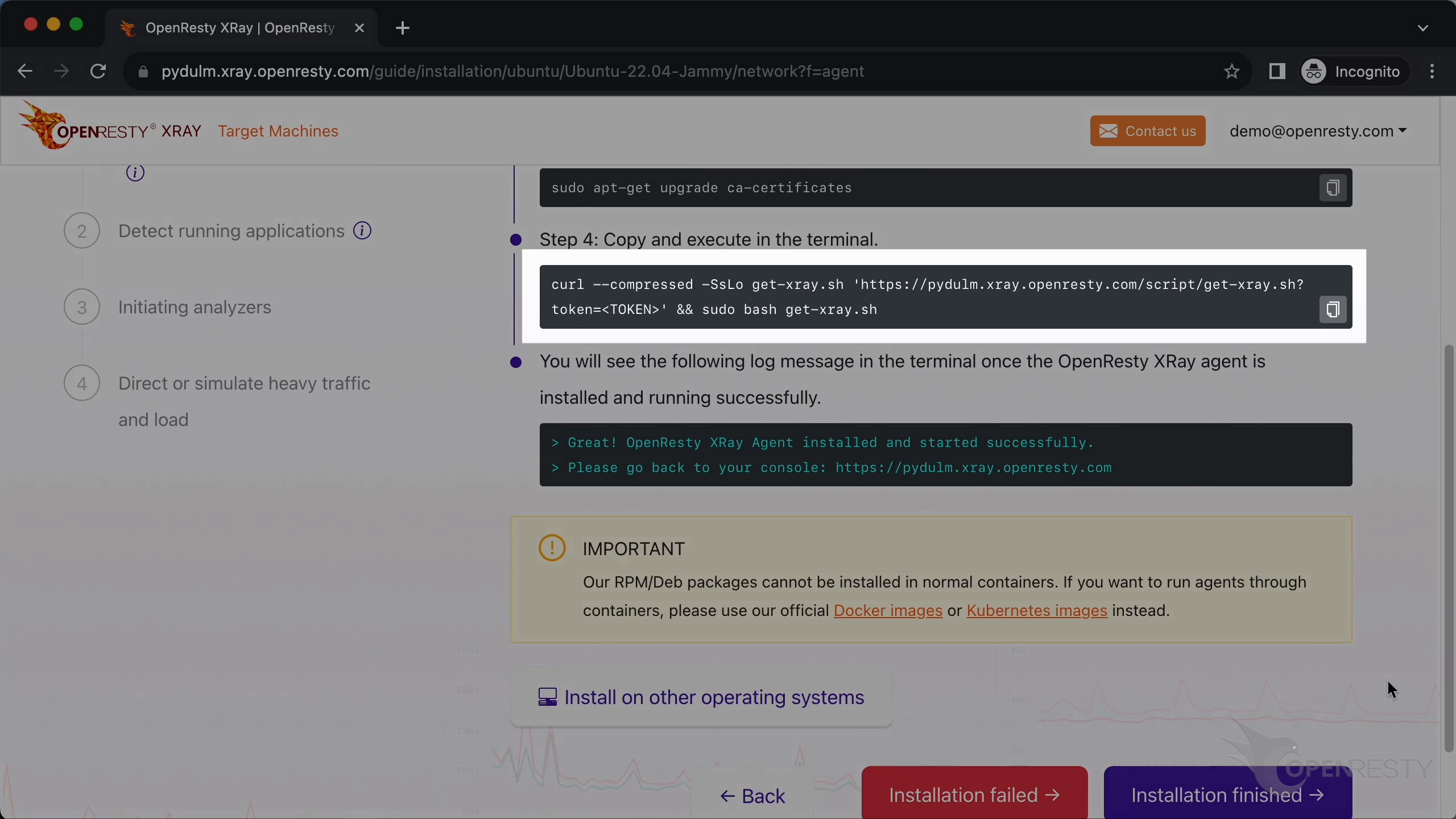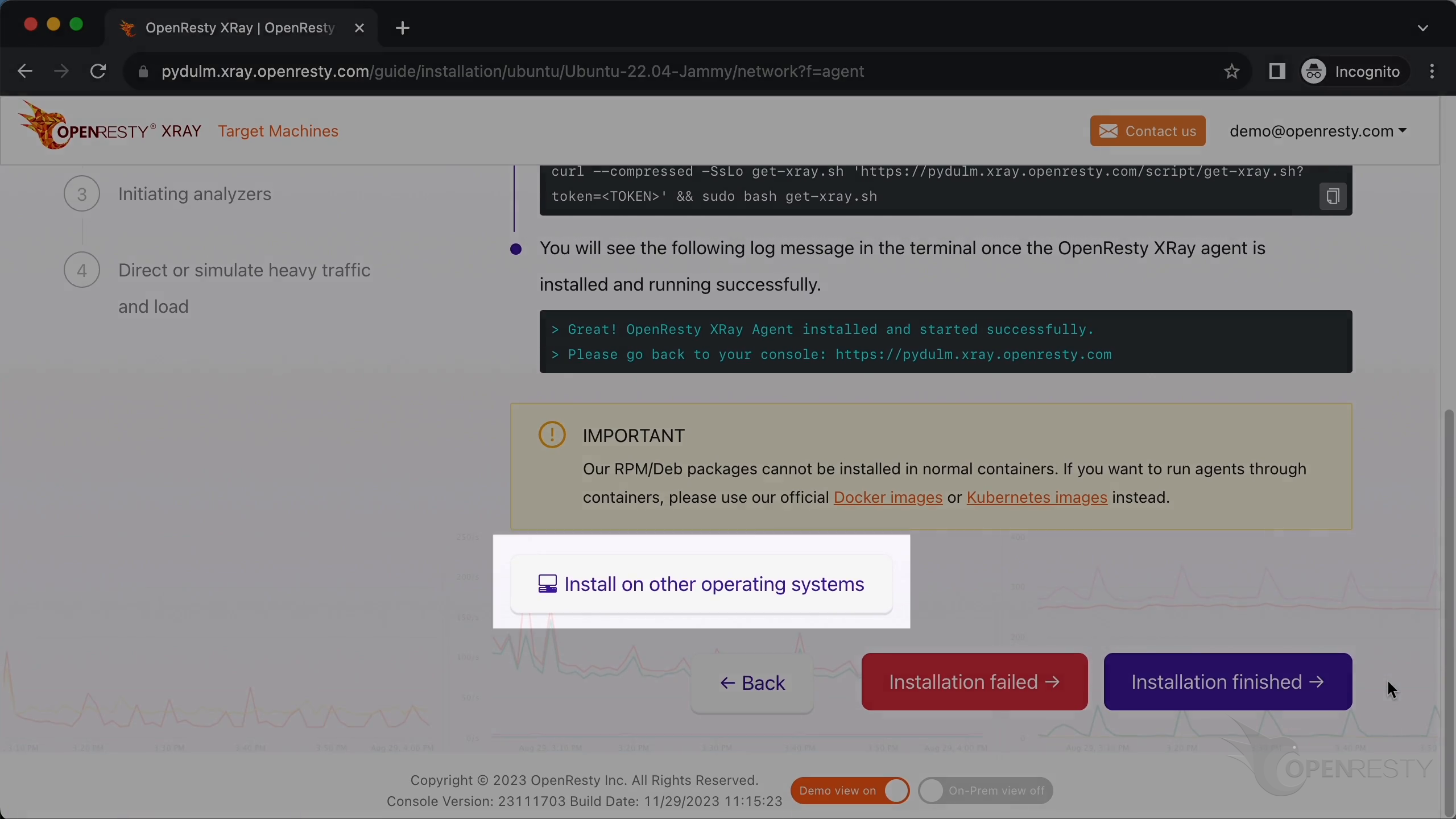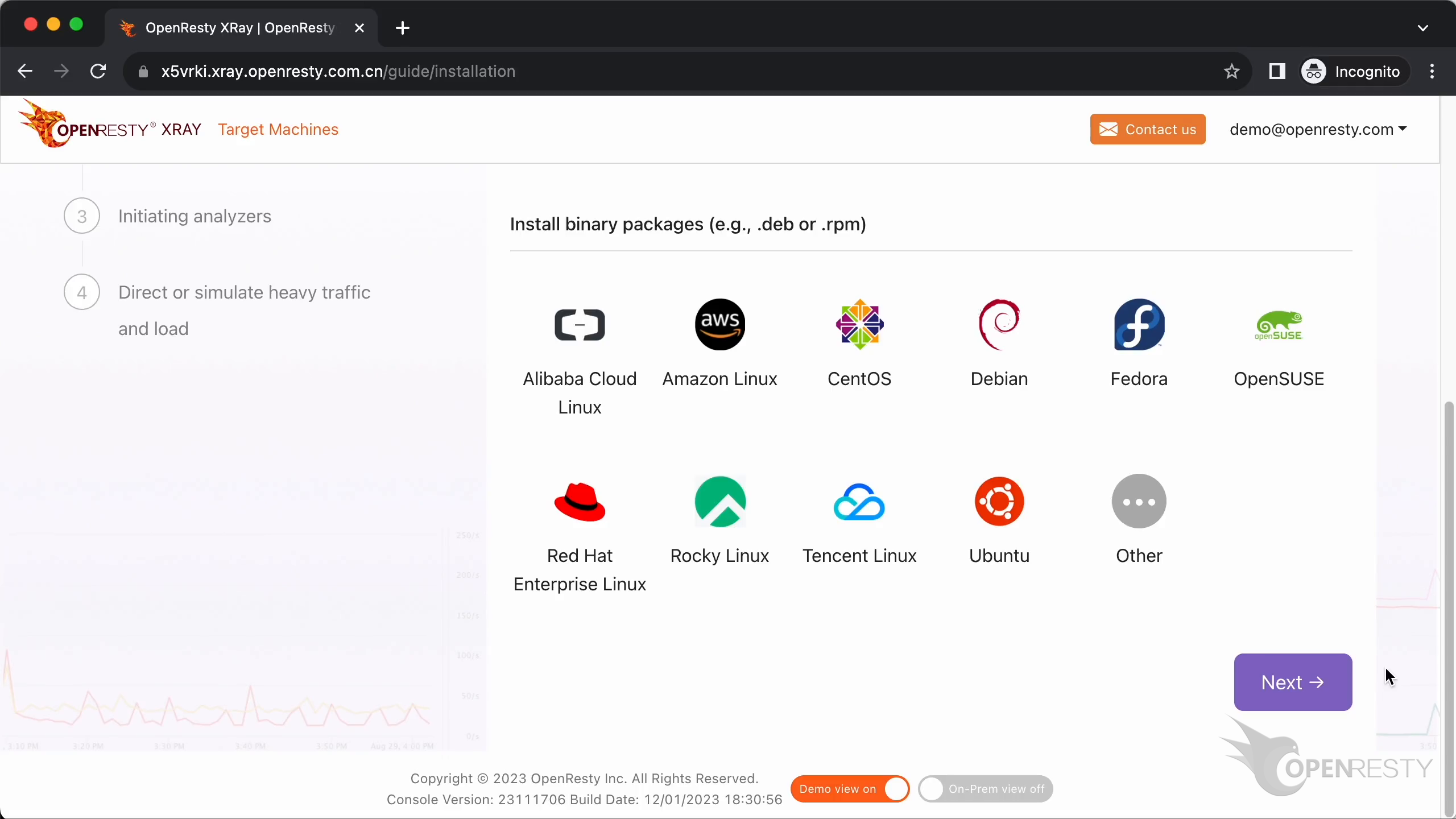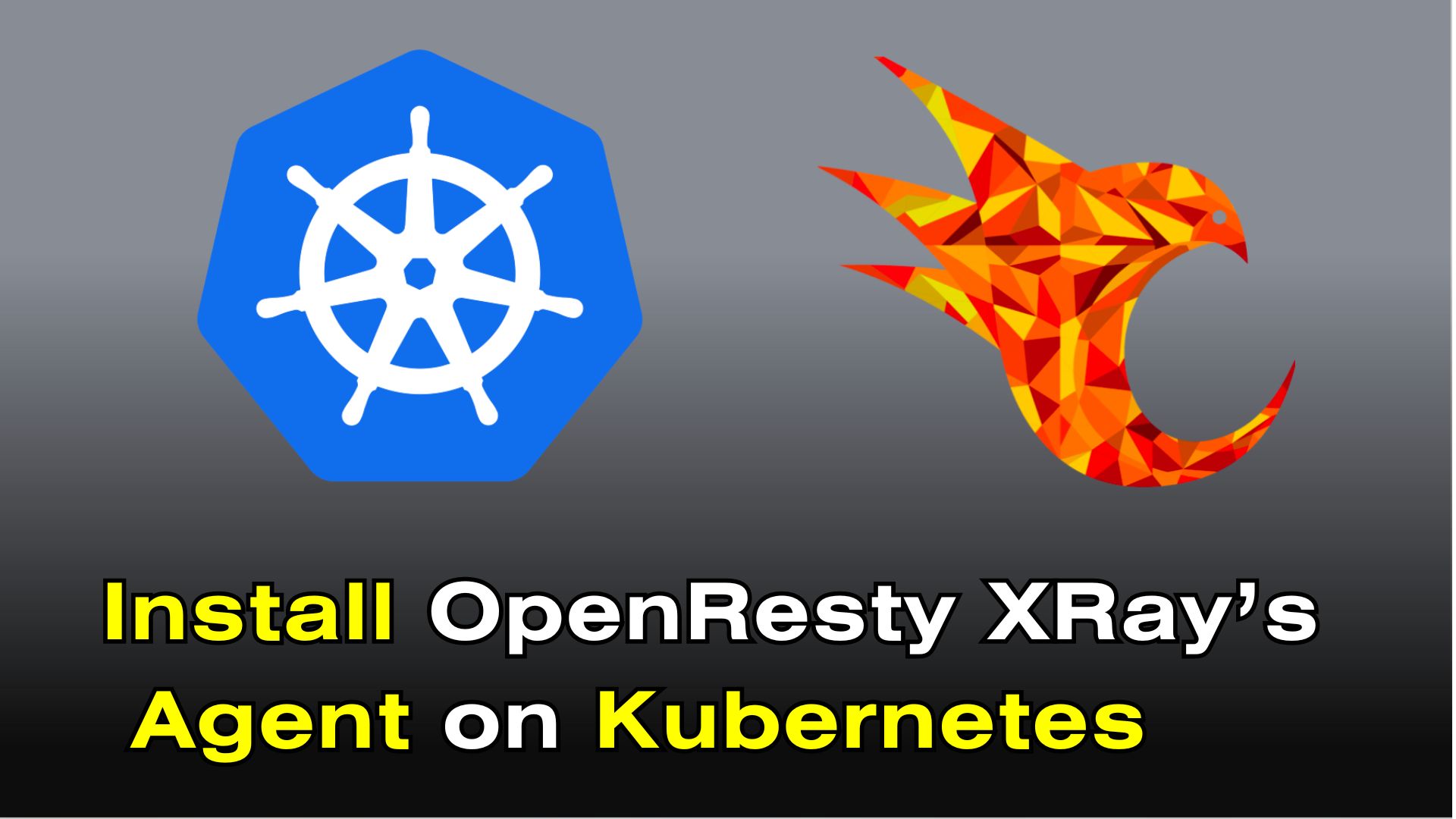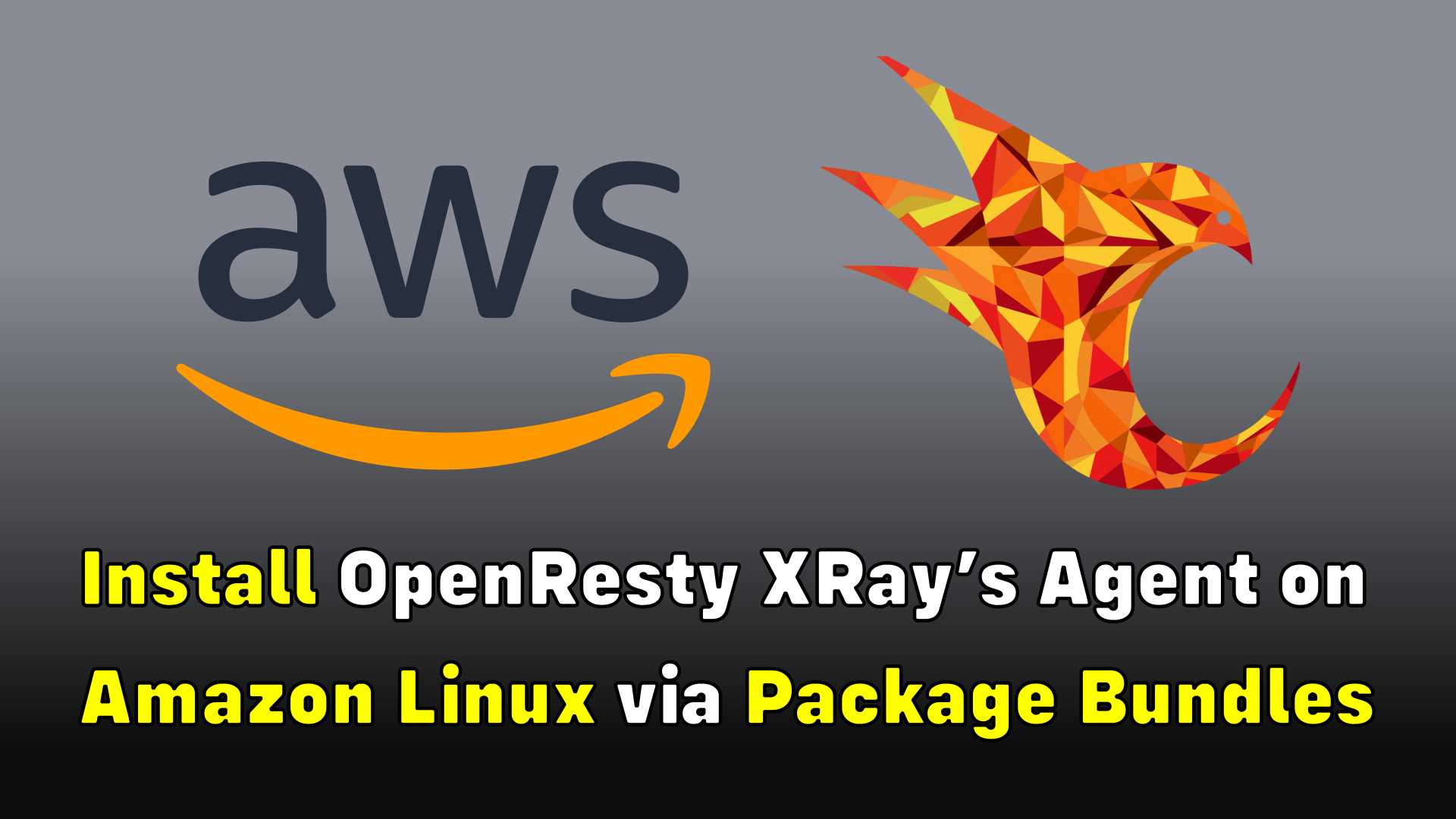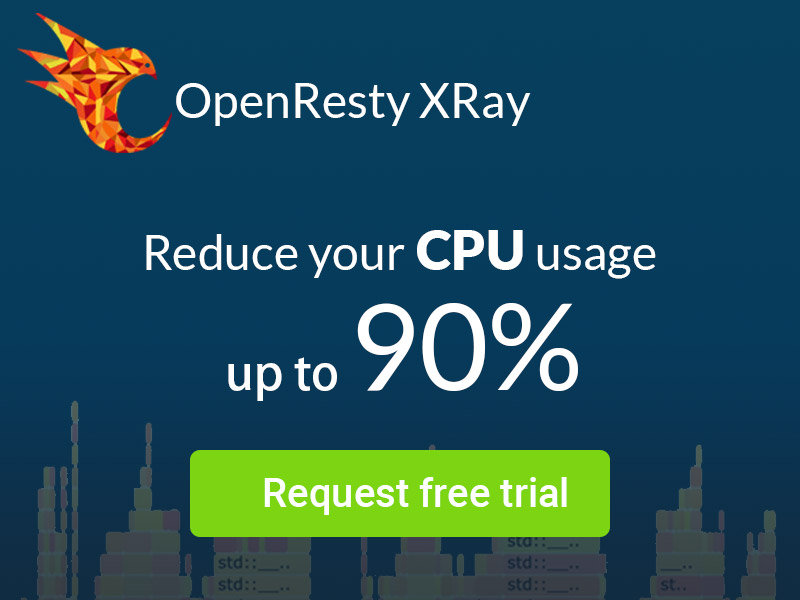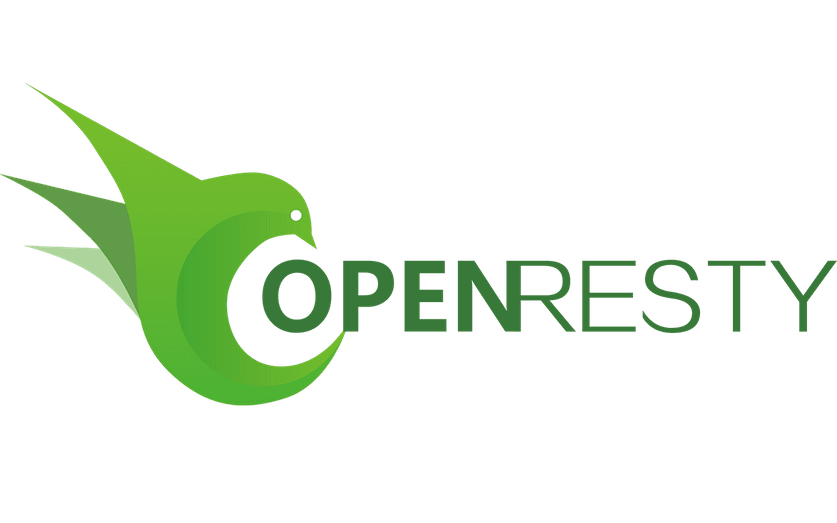Install OpenResty XRay’s Agents on Ubuntu via Deb Packages
I’ll show how to install OpenResty XRay’s Agent services on Ubuntu via Deb packages.
Logging in to the Console
Let’s log in first. Enter your account name.
Type in the password.
Click on “Sign in”.
Click on “Go to console”. It’ll take you to the guide for the Agent installation.
Installing the Agent via Deb Packages
Let me show you how to install via the Deb packages.
First, choose the operating system. It’s Ubuntu in this case.
Select the version number of the Ubuntu operating system.
Choose the “Network installation”.
Make sure your machine can access the internet.
If your curl command is not available, you can install it with this command.
You can also upgrade the ca-certificates package to the latest version with this command.
This is the Agent installation command.
Click to copy the command.
On the terminal, paste what we just copied. Run this command to install the Agent.
This can take a bit depending on your network latency. Please be patient.
The installation command was completed successfully.
Checking the Agent Status and Logs
Let’s go back to the web console. This command can check the status of the Agent service.
Click to copy.
Paste and execute this command to check the status.
We can see it’s running normally.
We can also check error log messages with this command.
Let’s copy it.
Paste and run this command to check the error logs.
Great! No error messages at all!
Configuring and Detecting Applications
Let’s go back to the wizard page. In non-production mode, the system will take a more aggressive approach to analysis to get results faster.
The production mode is for analyzing online production environments. It tries hard to minimize the performance impact on the target applications and servers. It may take longer to analyze though.
The paranoid mode is similar to the production mode, but it will try to further reduce the performance impact on the target servers’ request latency. Accordingly, it will take longer to sample.
Let’s automate the detection of running applications and containers on the target system.
These are the target applications automatically detected.
If you need to add a new application to detect, you can customize the configuration. You can type in the new application name.
Select the type of application.
You can select the process corresponding to the new application from the list here.
Initiating Analyzers and Viewing Insights
Click to initiate analyzers.
The analyzers just started running.
Click on “Traffic and Load”.
The system has detected there’s sufficient traffic and load on the machine. It can only conduct meaningful analysis when the target application has traffic and load.
Let’s enter the console dashboard.
Go to the “Insights” page.
Wait for the first analysis report since the first Agent was just installed. The report in"Insights" page is generated by aggregating all applications on all Agents.
You can watch the progress in real-time.
We can see that the first fully automated analysis report has already been generated.
Daily and weekly reports will be automatically generated regularly in the future.
Go to the “Dashboard” page.
We can see flame diagrams and charts for various kinds of applications. Such as Go, OpenResty, and Python applications.
Install Another Agent
To install another Agent, just click here.
It’s still the same step as we did earlier, to install the Agent on Ubuntu using the Deb packages.
To install on other operating systems, or use installation methods like containers. Just click here.
We’re back to the wizard page we saw previously. Where we can choose different installation options or operating systems.
What is OpenResty XRay
OpenResty XRay is a dynamic-tracing product that automatically analyzes your running applications to troubleshoot performance problems, behavioral issues, and security vulnerabilities with actionable suggestions. Under the hood, OpenResty XRay is powered by our Y language targeting various runtimes like Stap+, eBPF+, GDB, and ODB, depending on the contexts.
If you like this tutorial, please subscribe to this blog site and/or our YouTube channel. Thank you!
About The Author
Yichun Zhang (Github handle: agentzh), is the original creator of the OpenResty® open-source project and the CEO of OpenResty Inc..
Yichun is one of the earliest advocates and leaders of “open-source technology”. He worked at many internationally renowned tech companies, such as Cloudflare, Yahoo!. He is a pioneer of “edge computing”, “dynamic tracing” and “machine coding”, with over 22 years of programming and 16 years of open source experience. Yichun is well-known in the open-source space as the project leader of OpenResty®, adopted by more than 40 million global website domains.
OpenResty Inc., the enterprise software start-up founded by Yichun in 2017, has customers from some of the biggest companies in the world. Its flagship product, OpenResty XRay, is a non-invasive profiling and troubleshooting tool that significantly enhances and utilizes dynamic tracing technology. And its OpenResty Edge product is a powerful distributed traffic management and private CDN software product.
As an avid open-source contributor, Yichun has contributed more than a million lines of code to numerous open-source projects, including Linux kernel, Nginx, LuaJIT, GDB, SystemTap, LLVM, Perl, etc. He has also authored more than 60 open-source software libraries.




